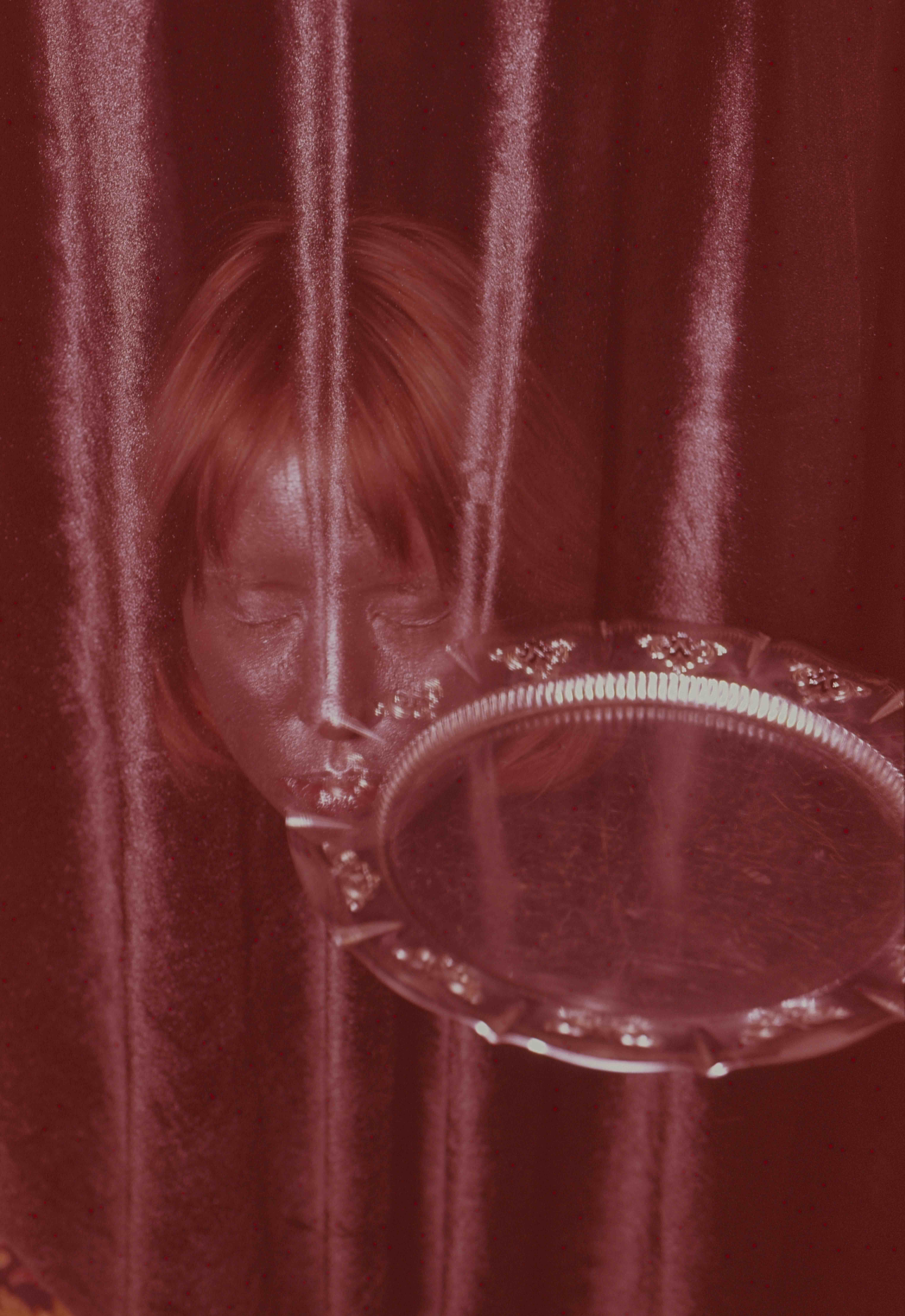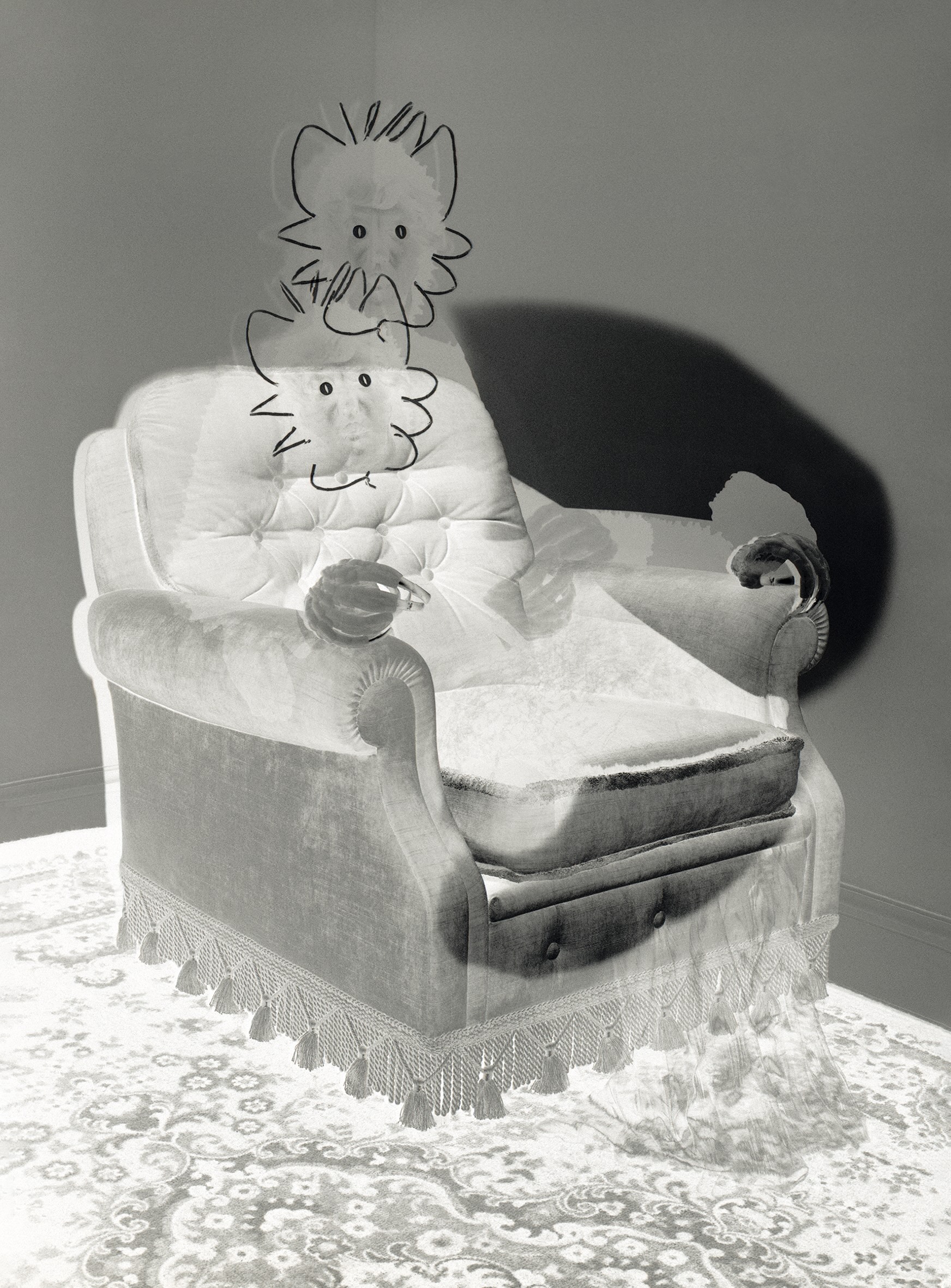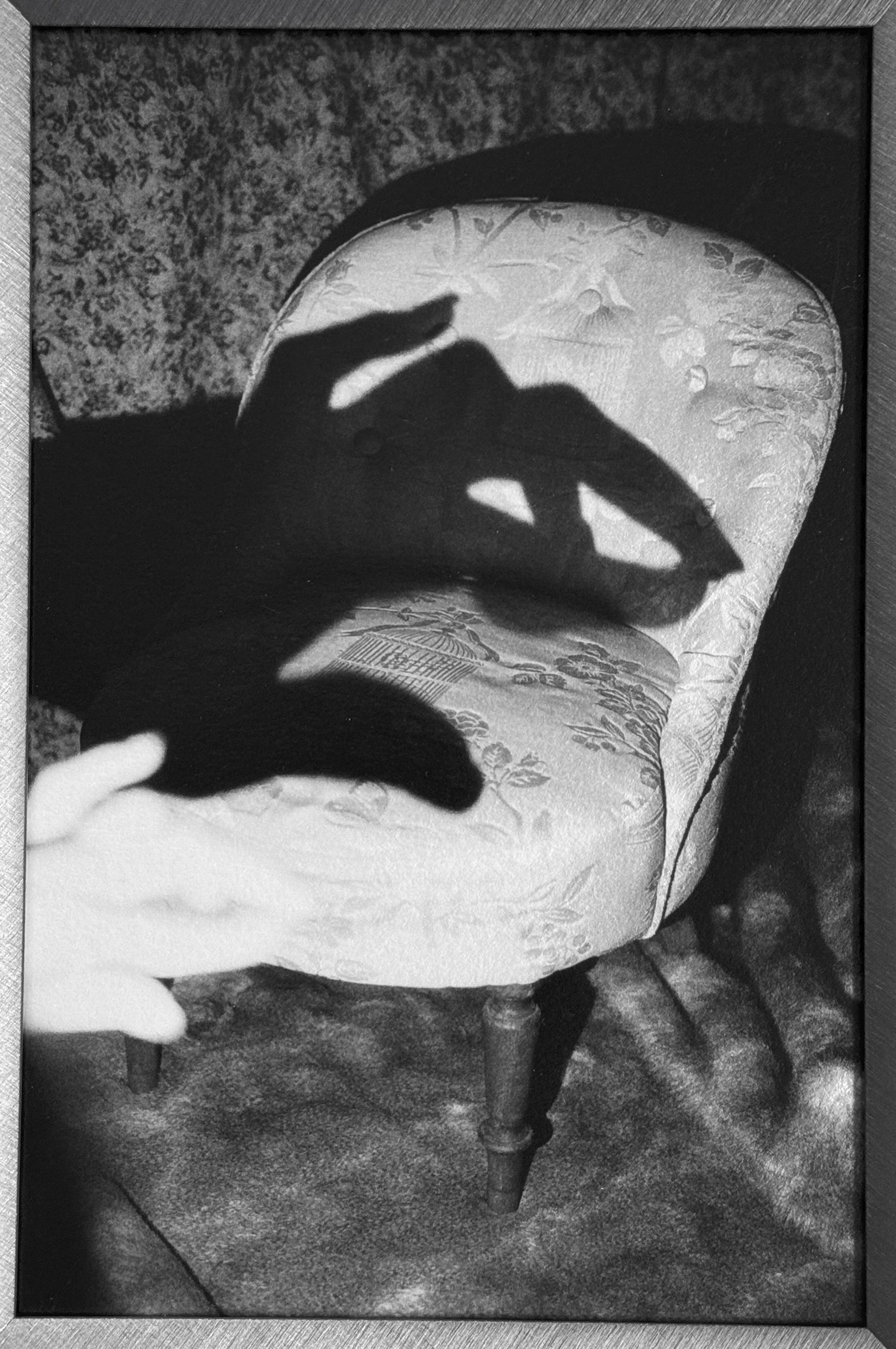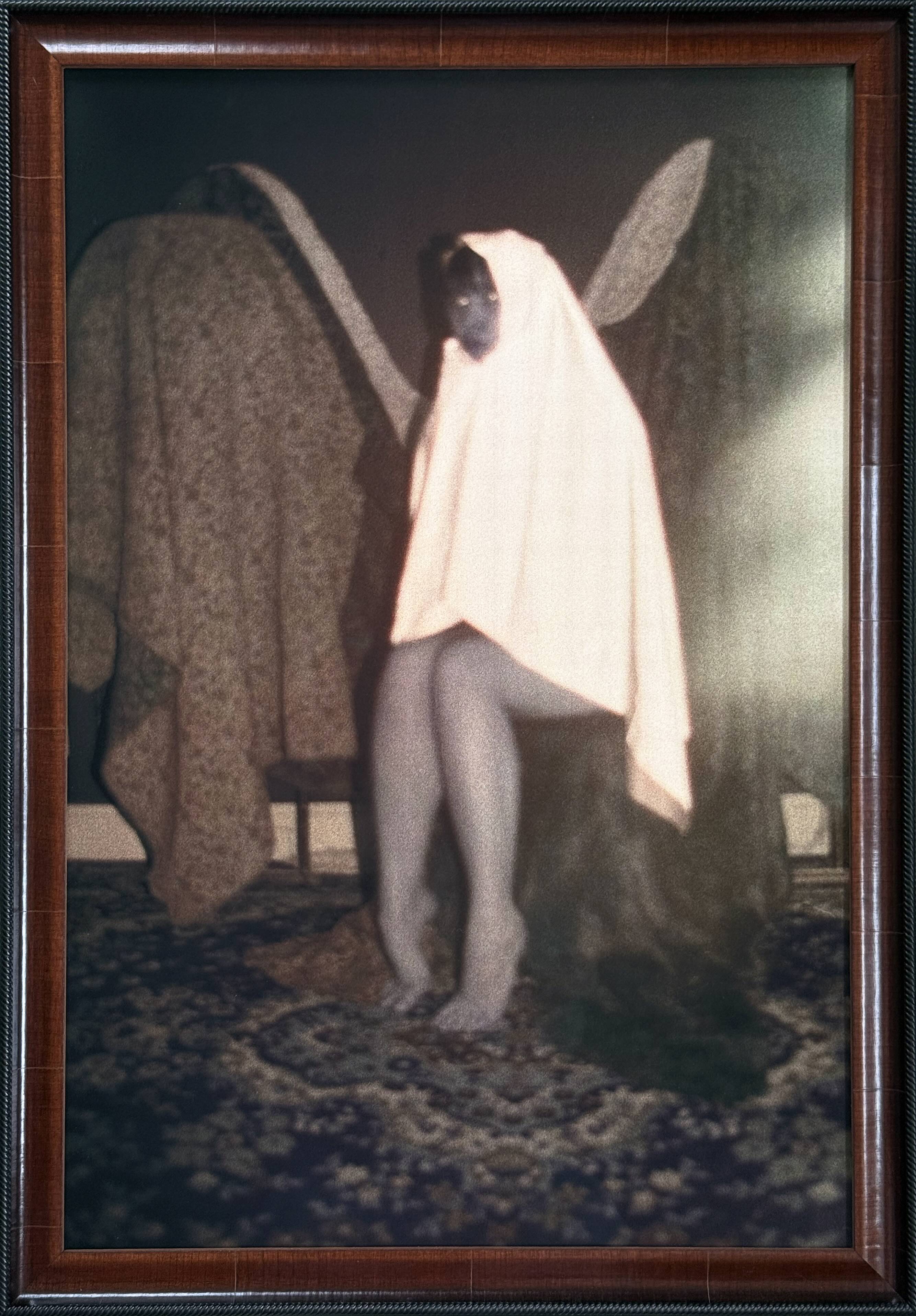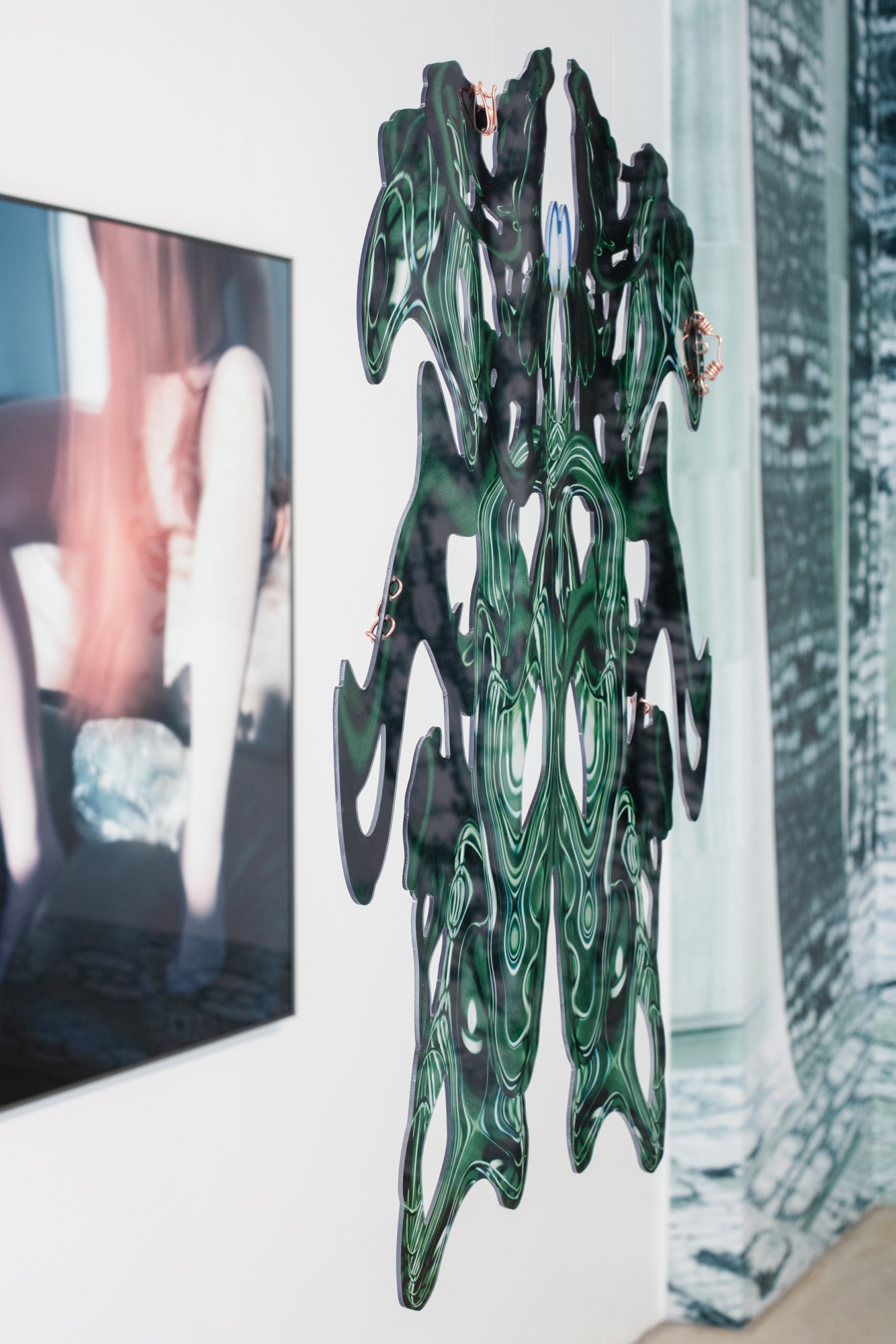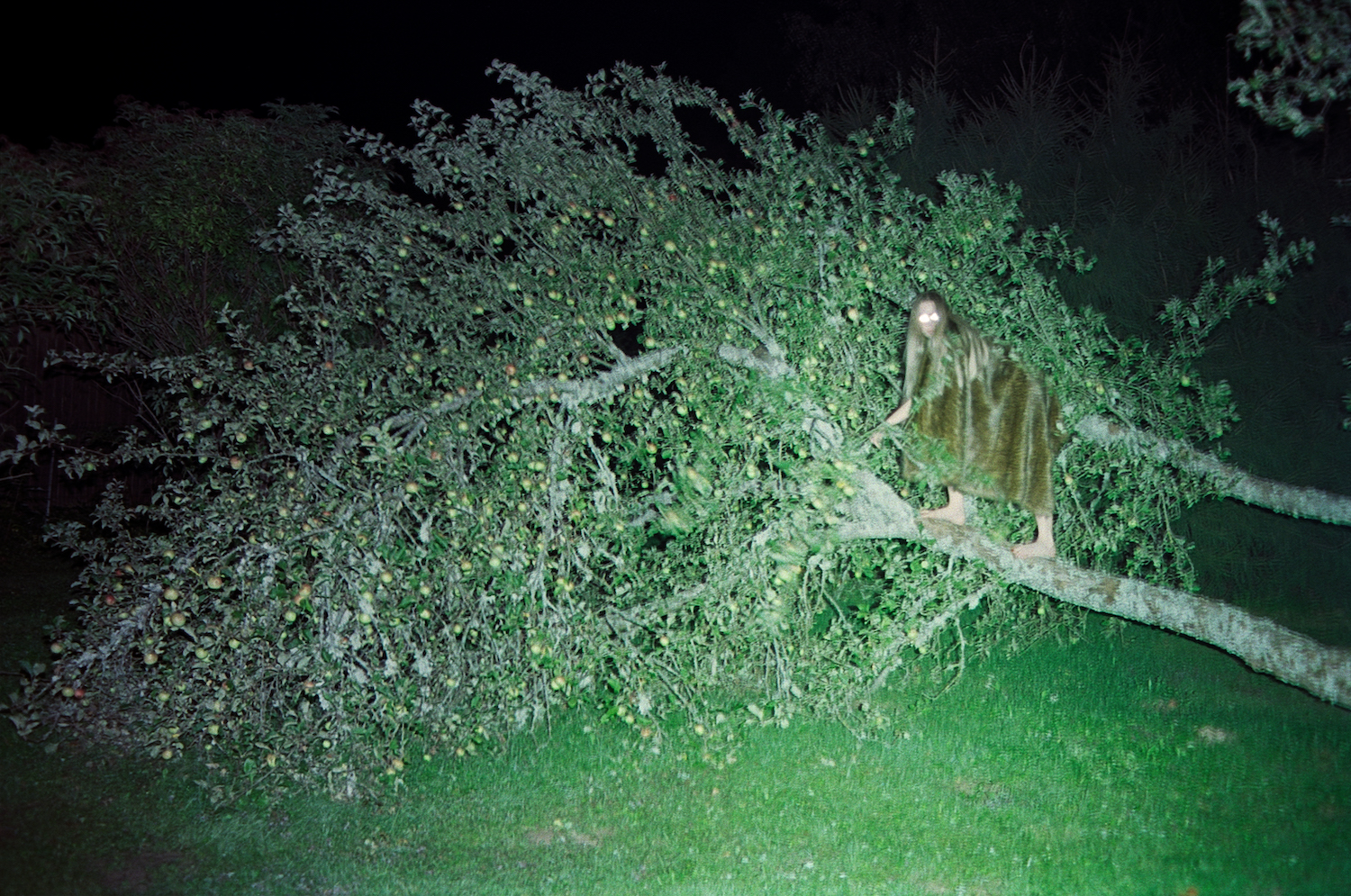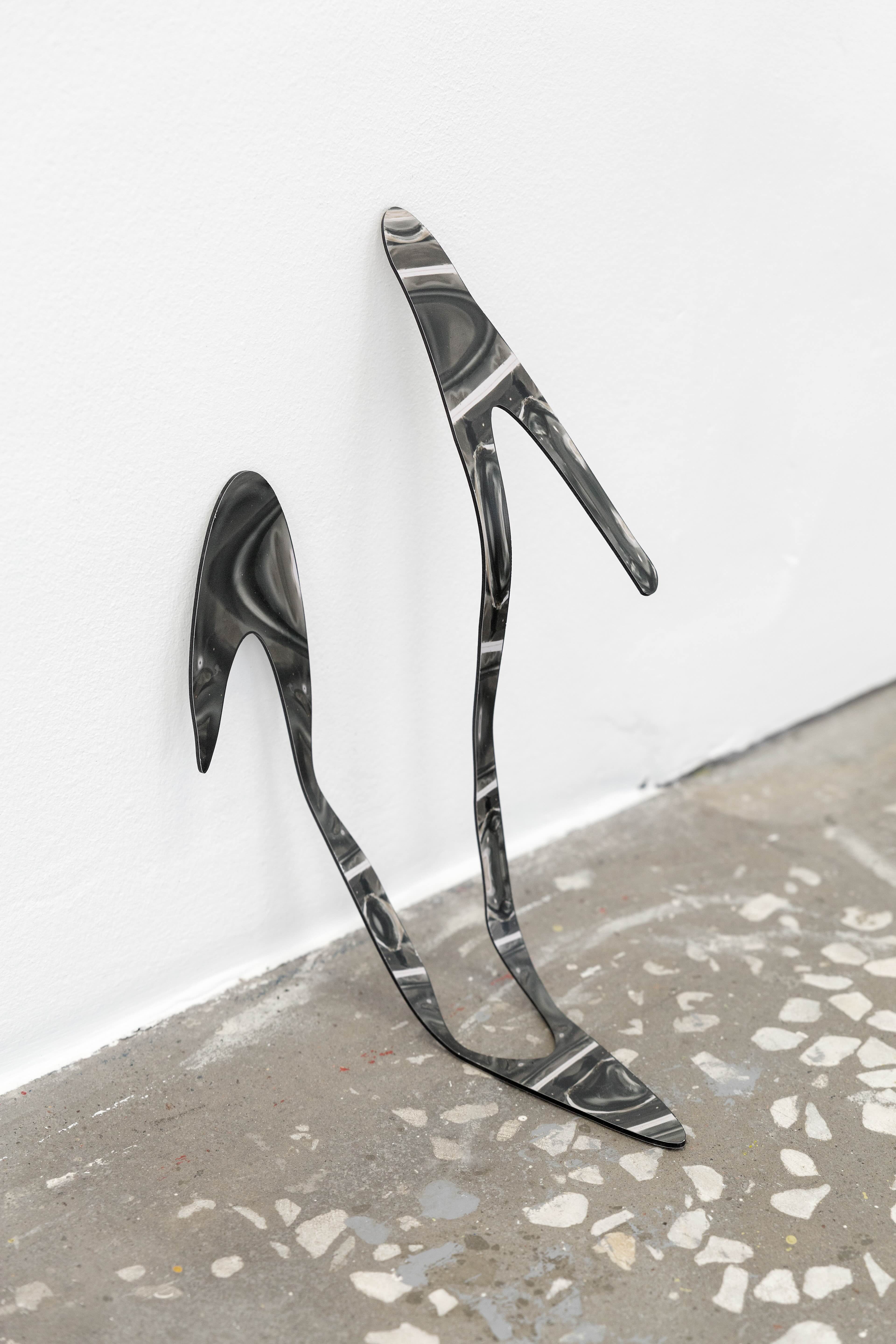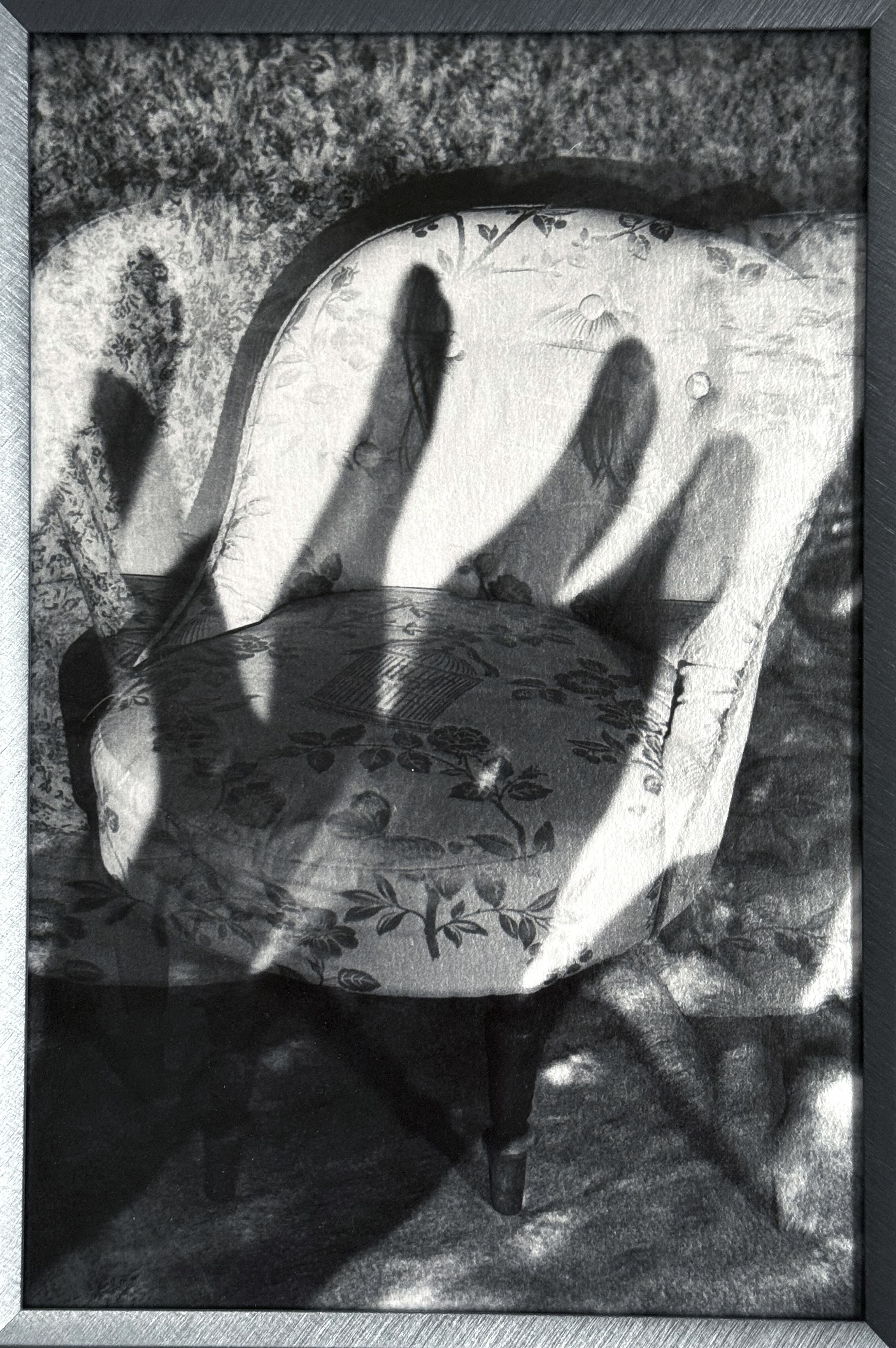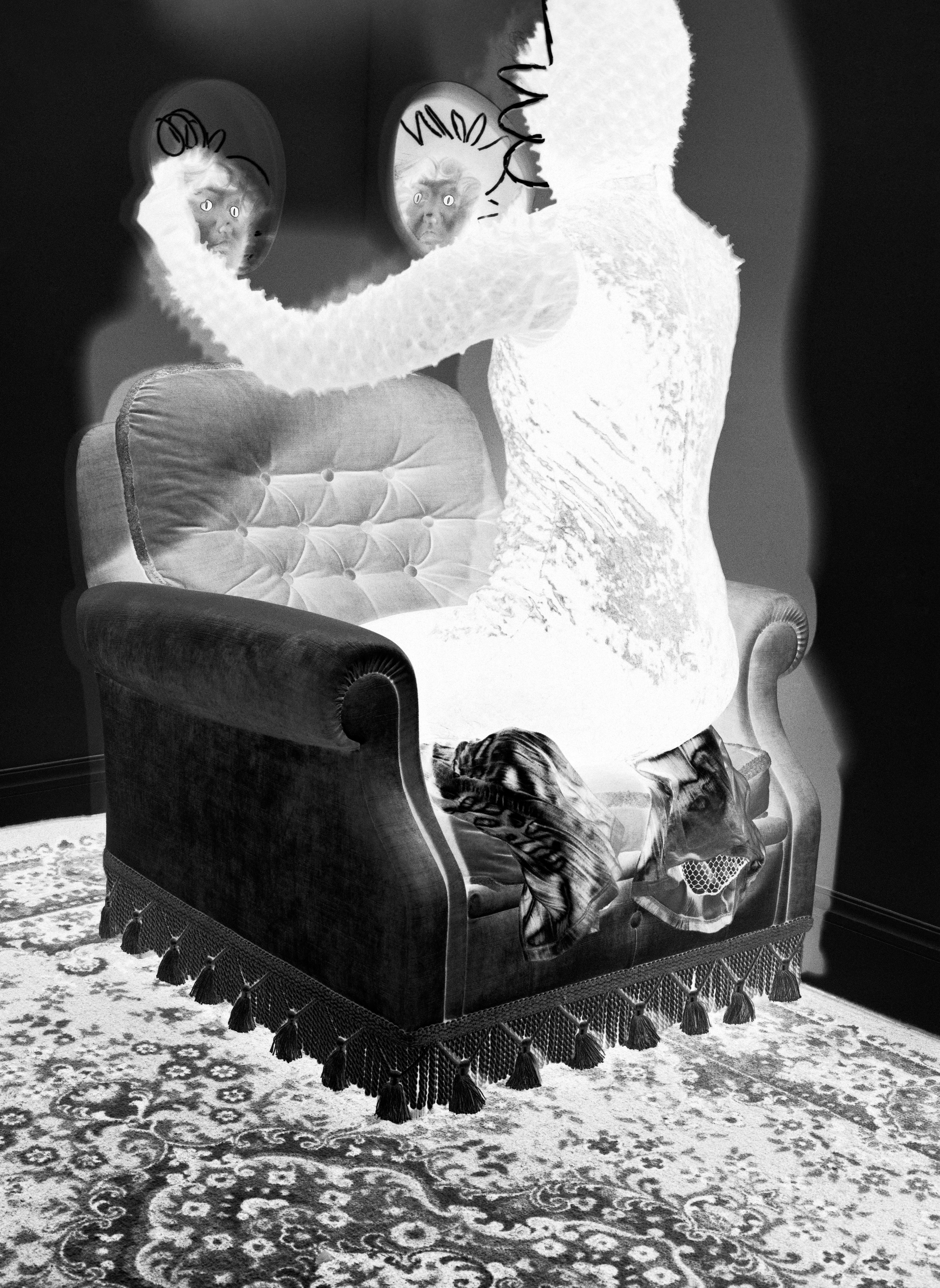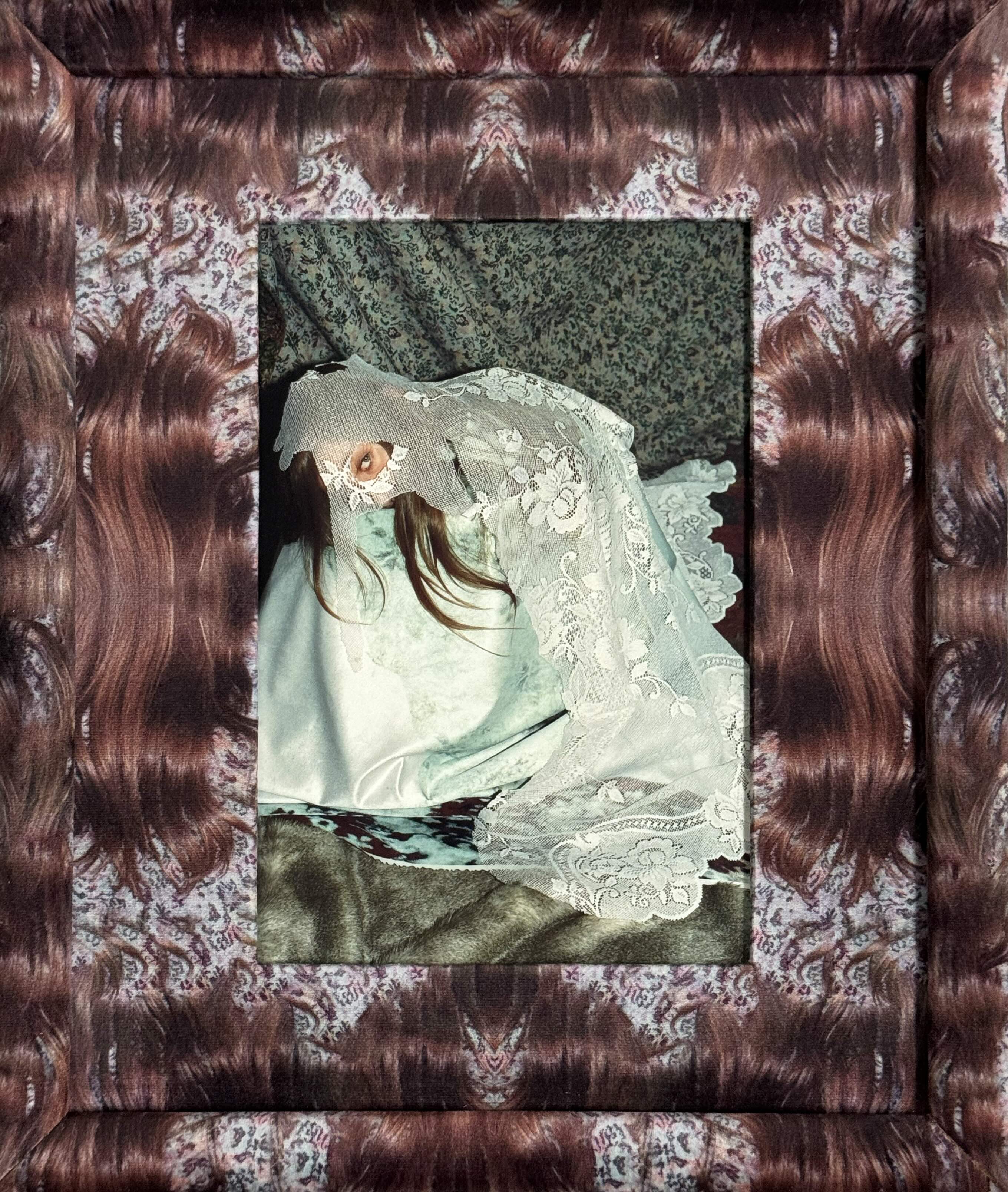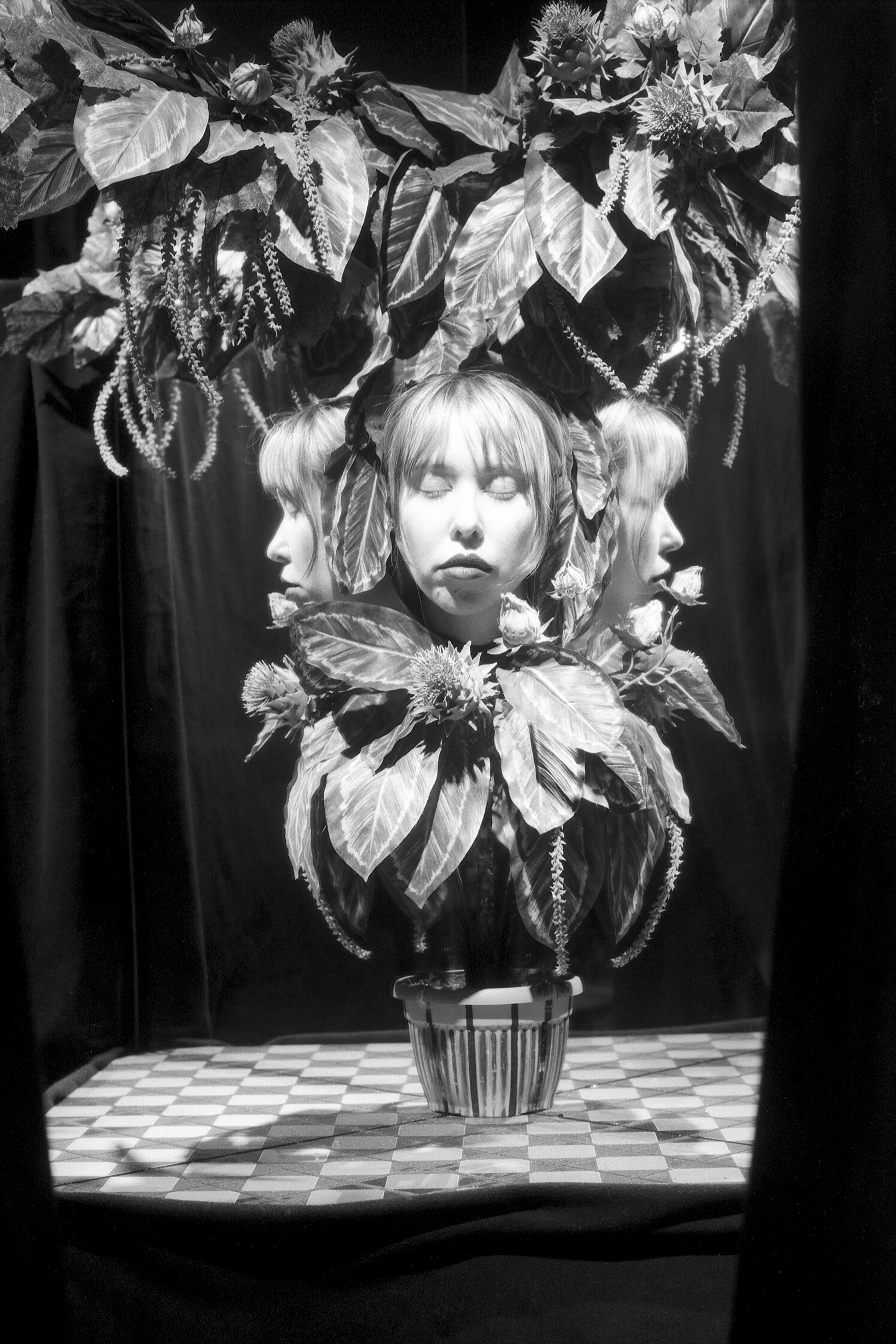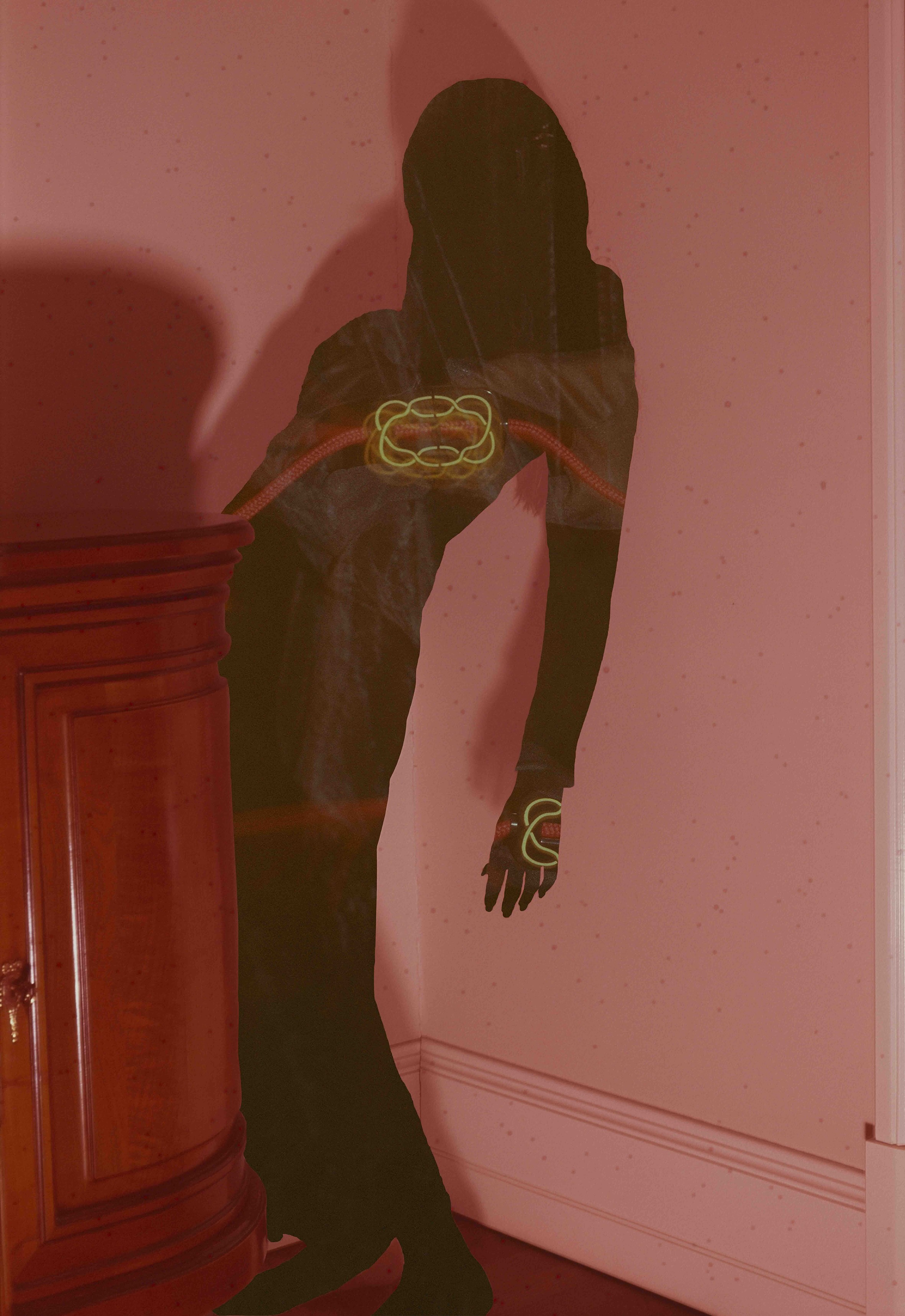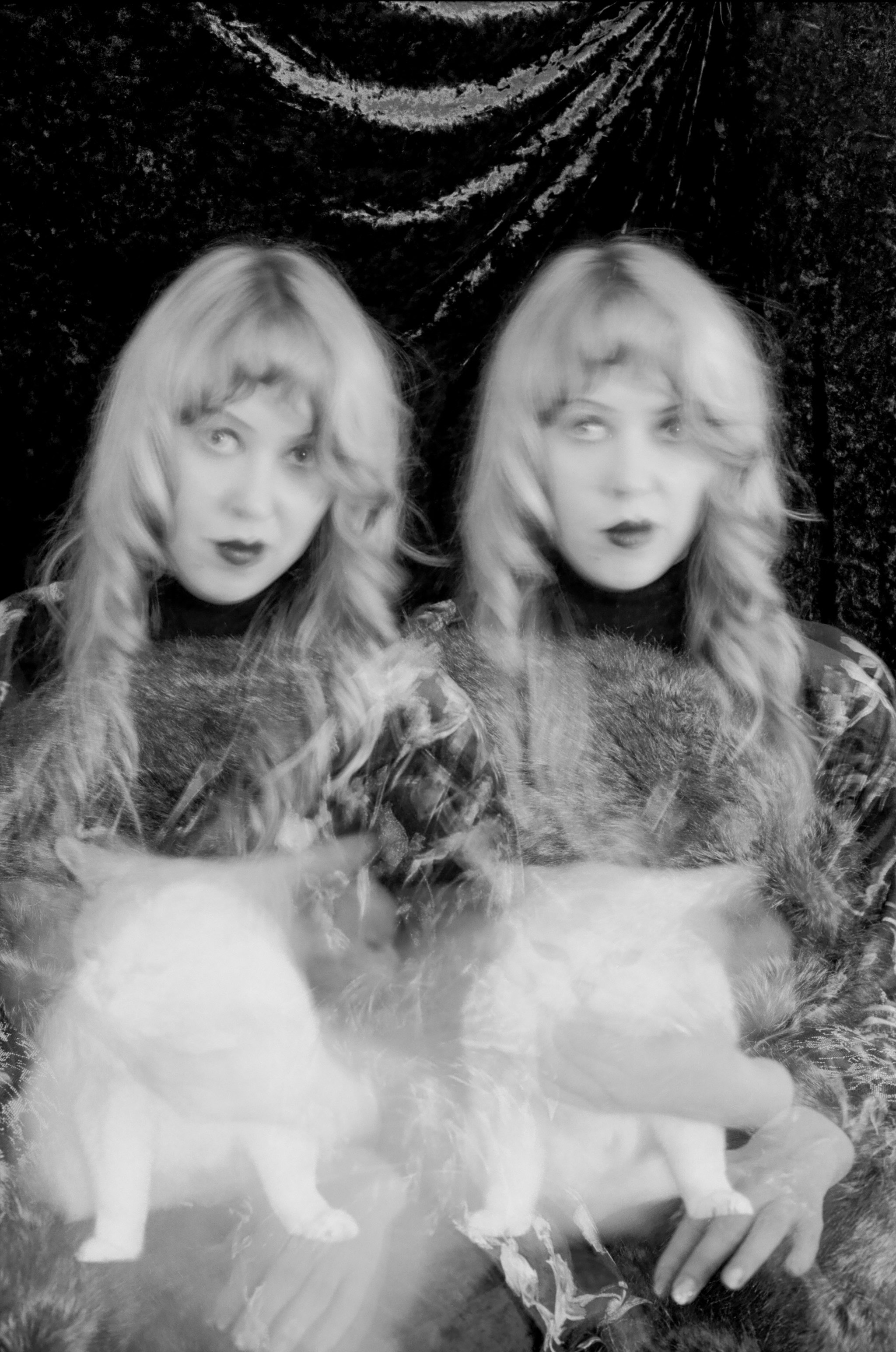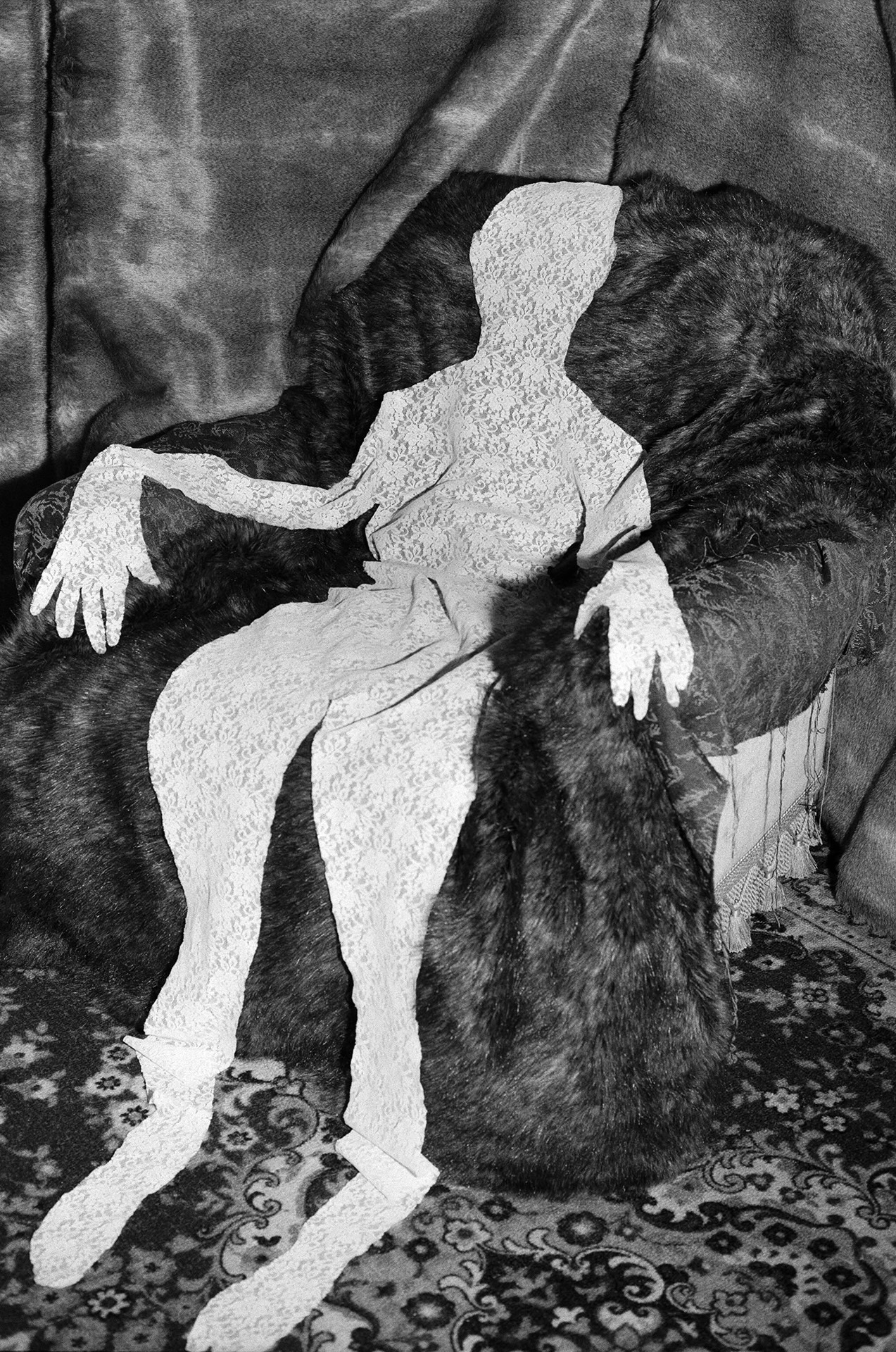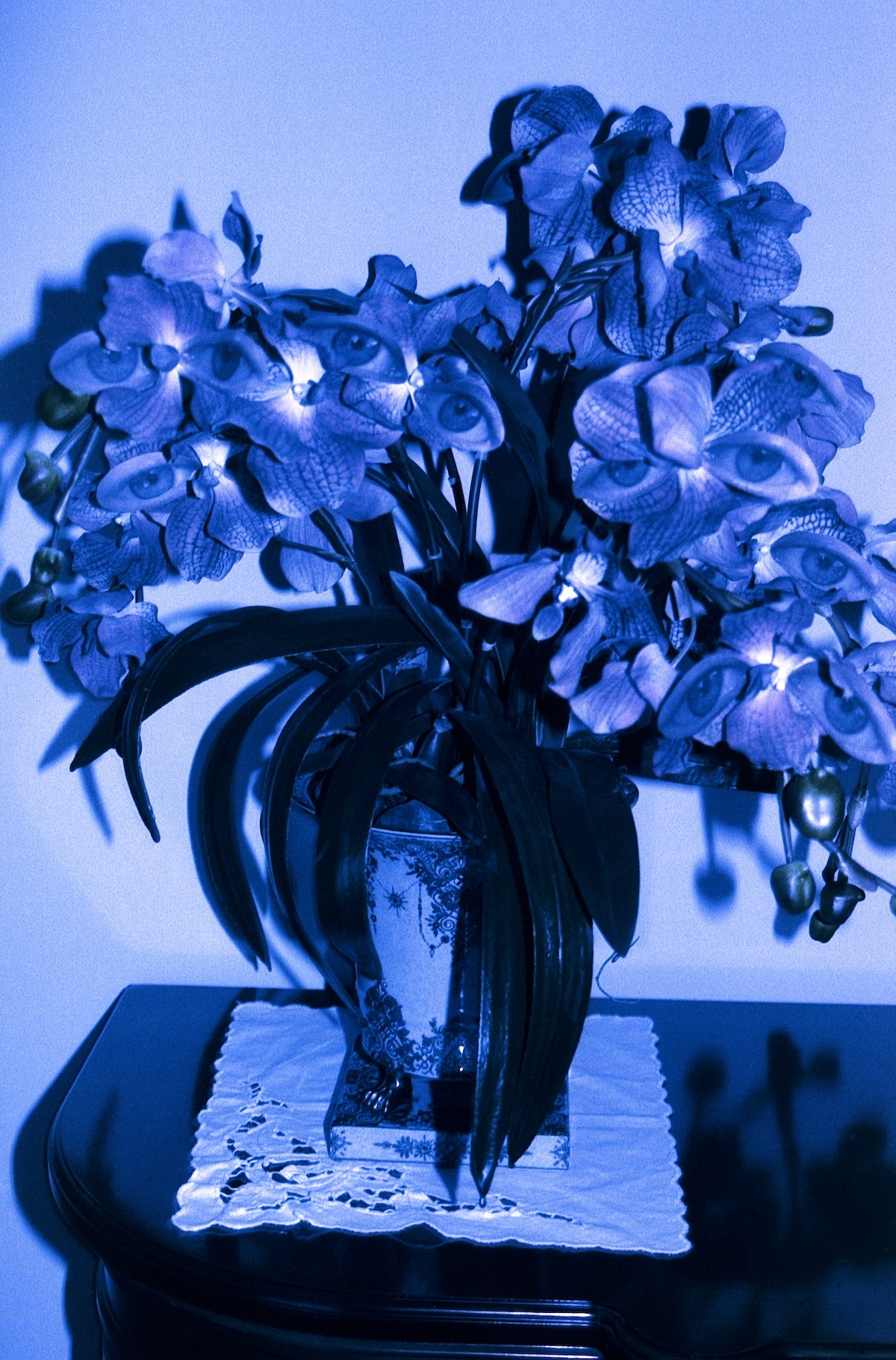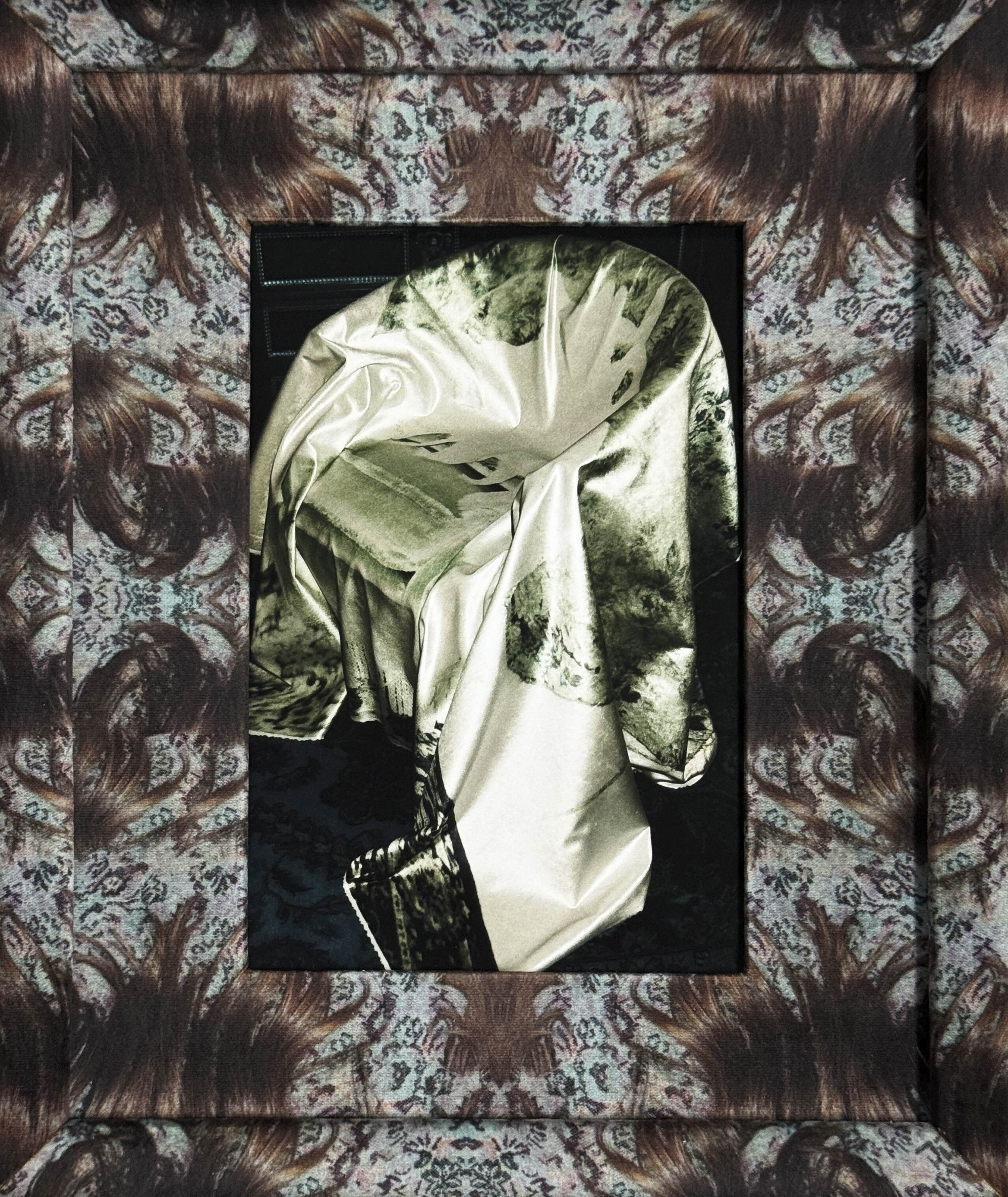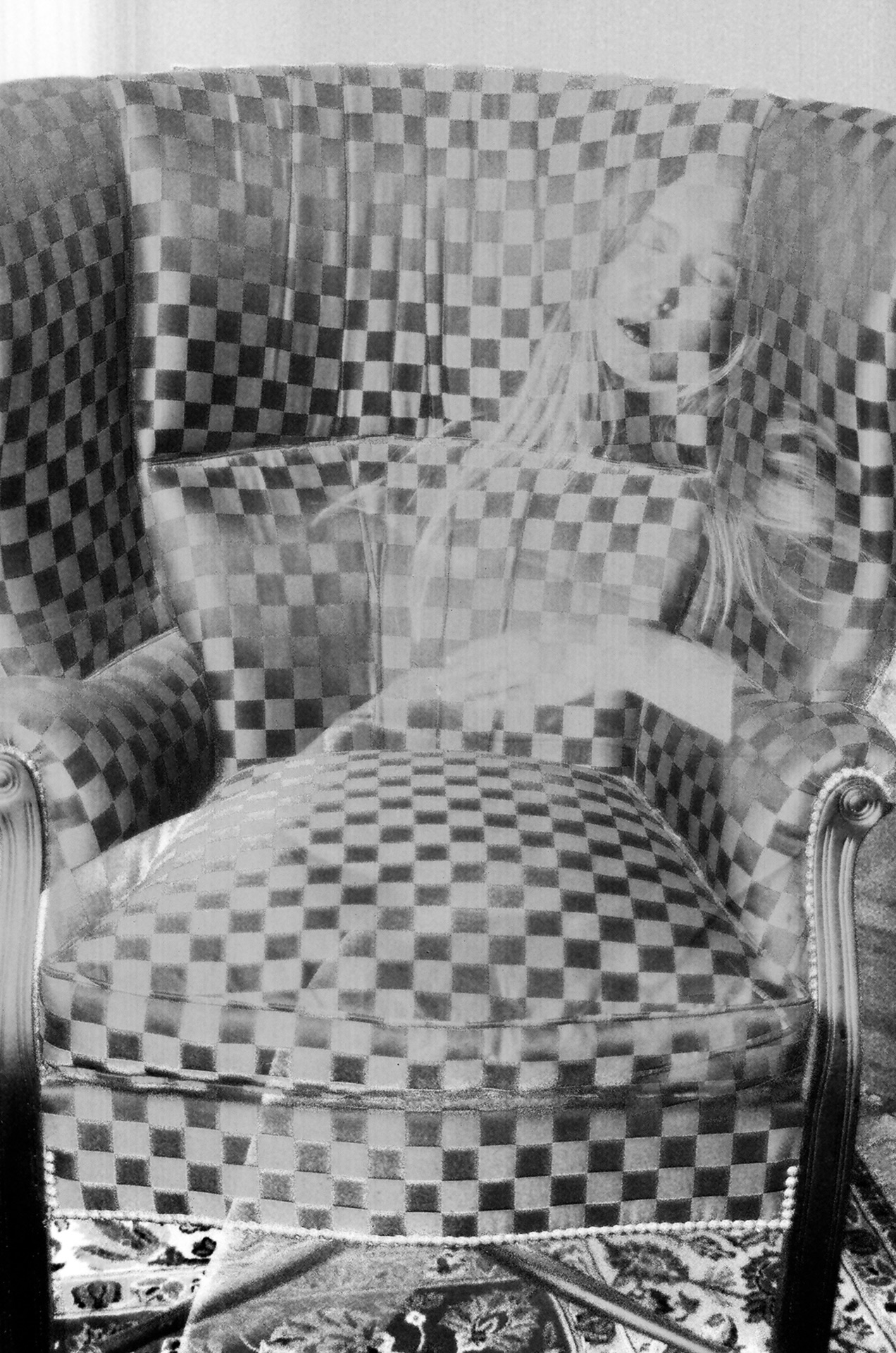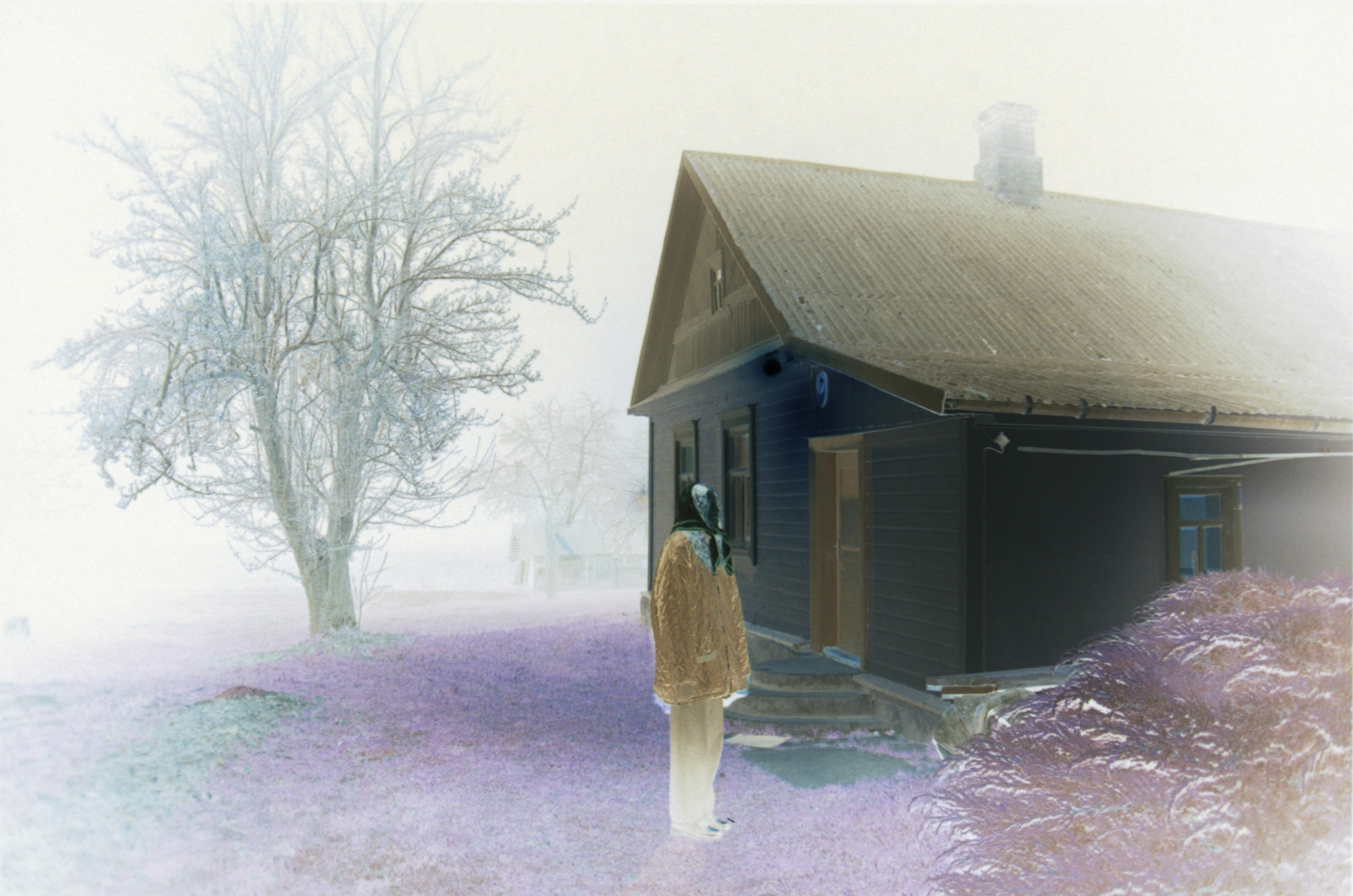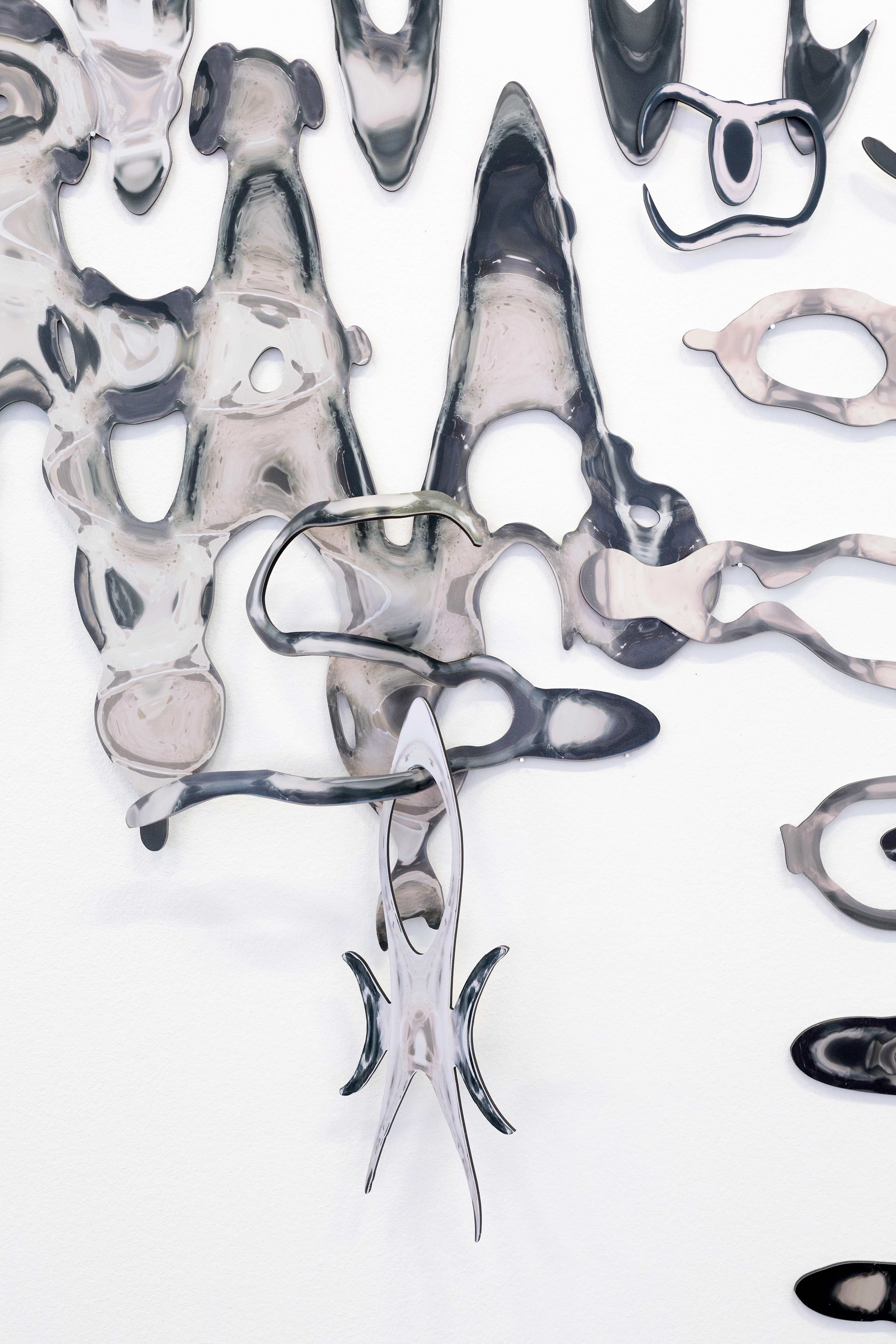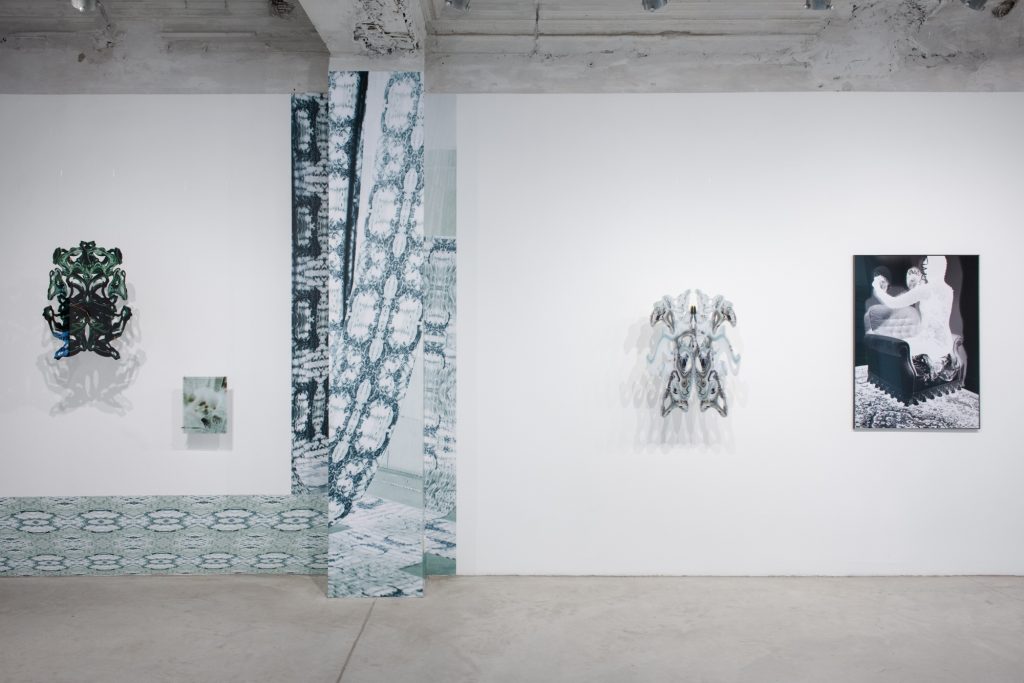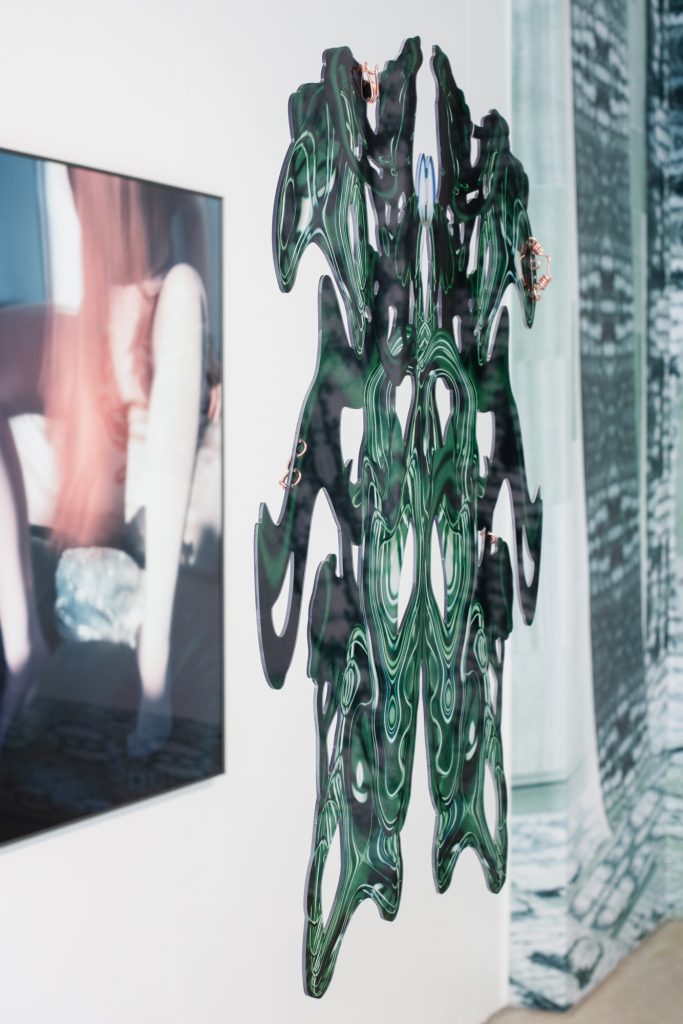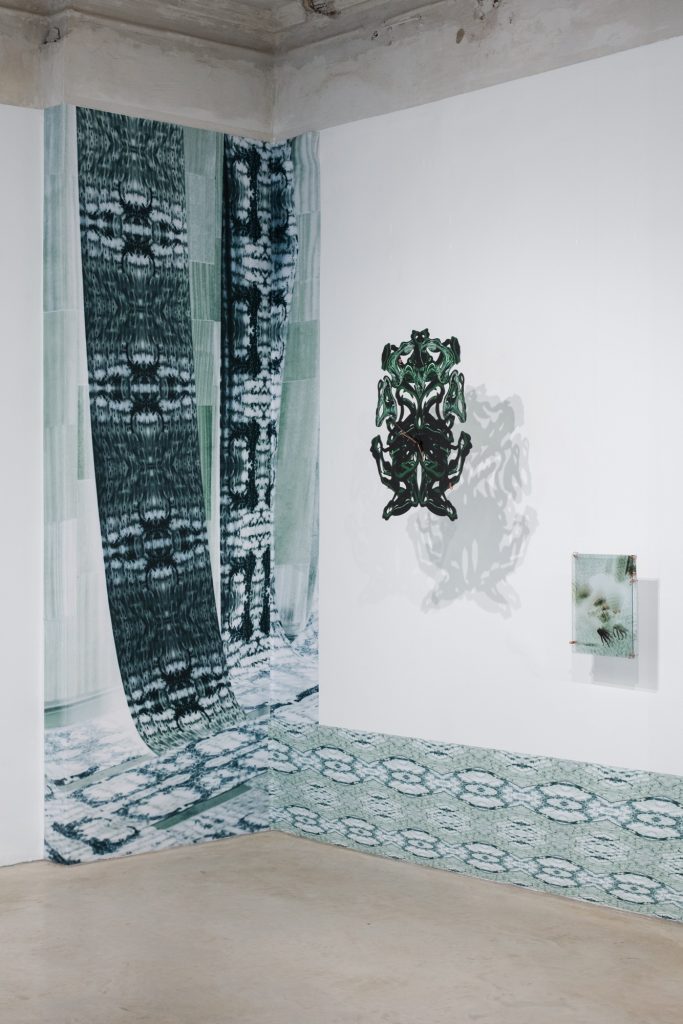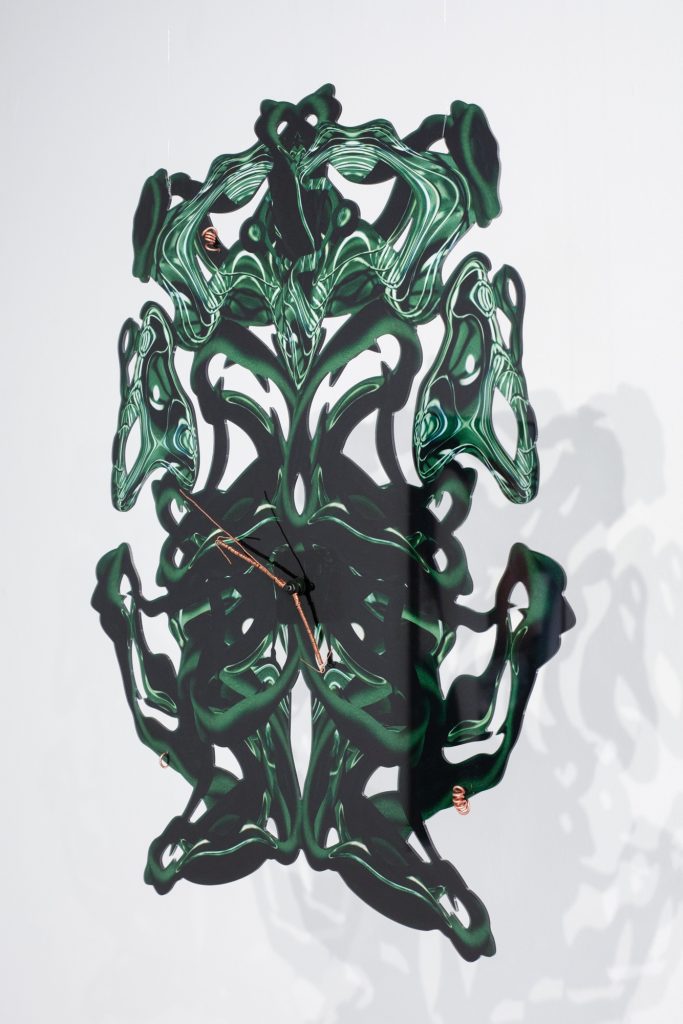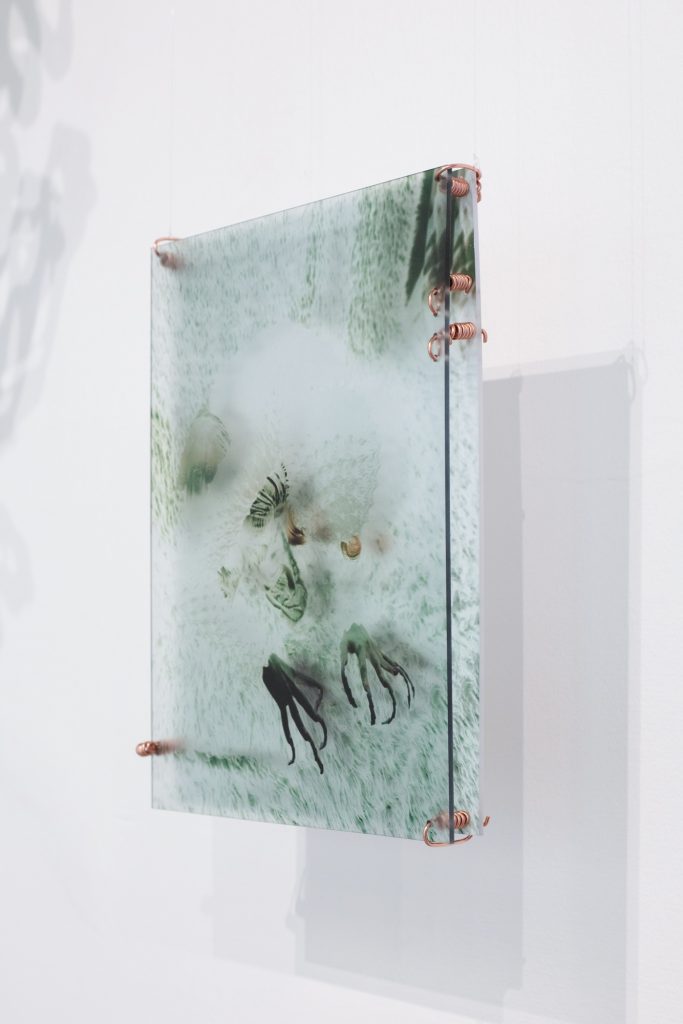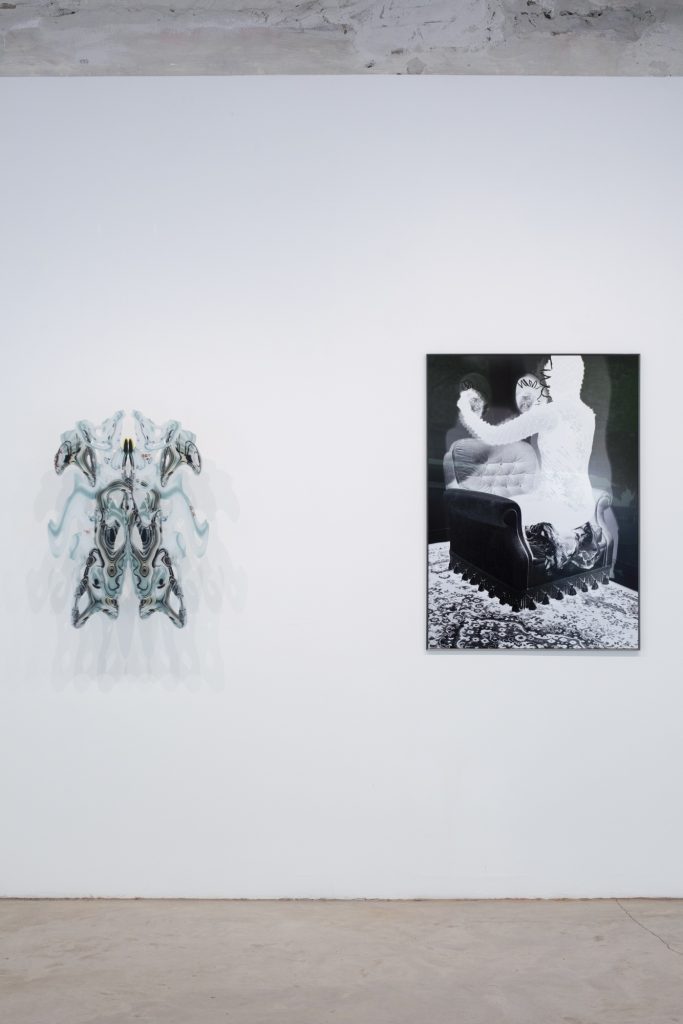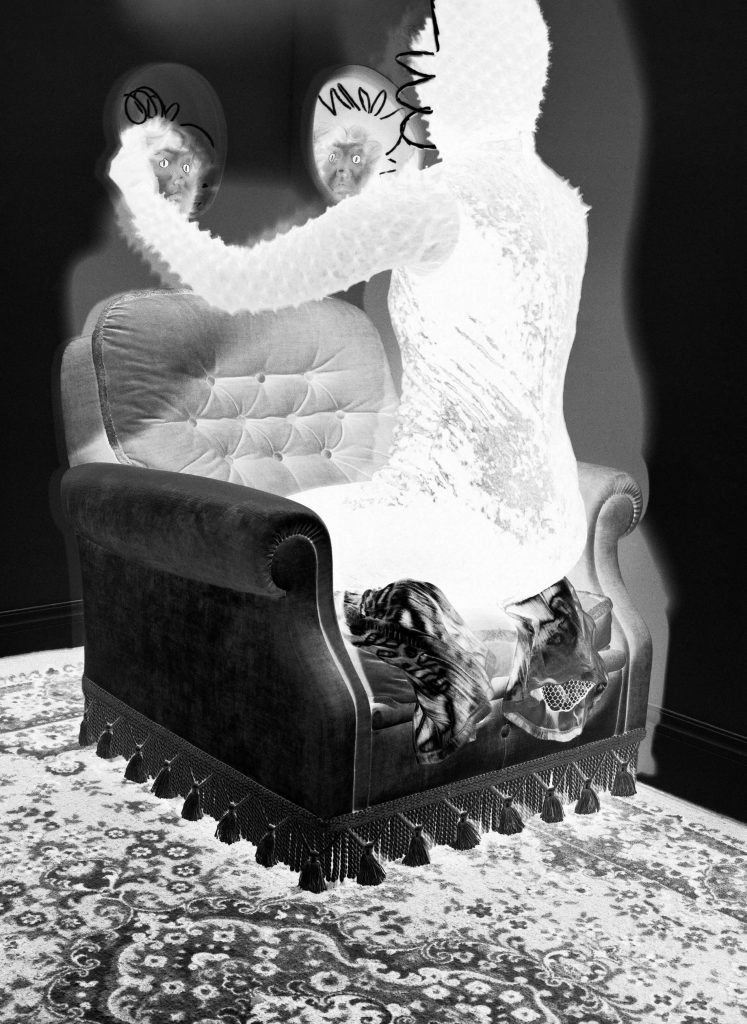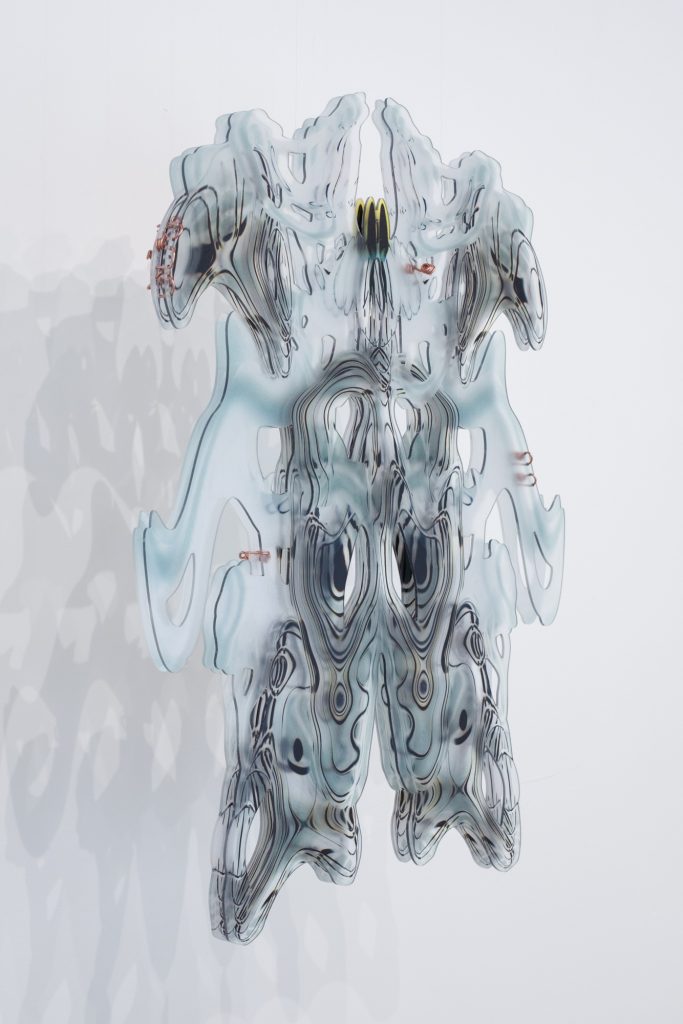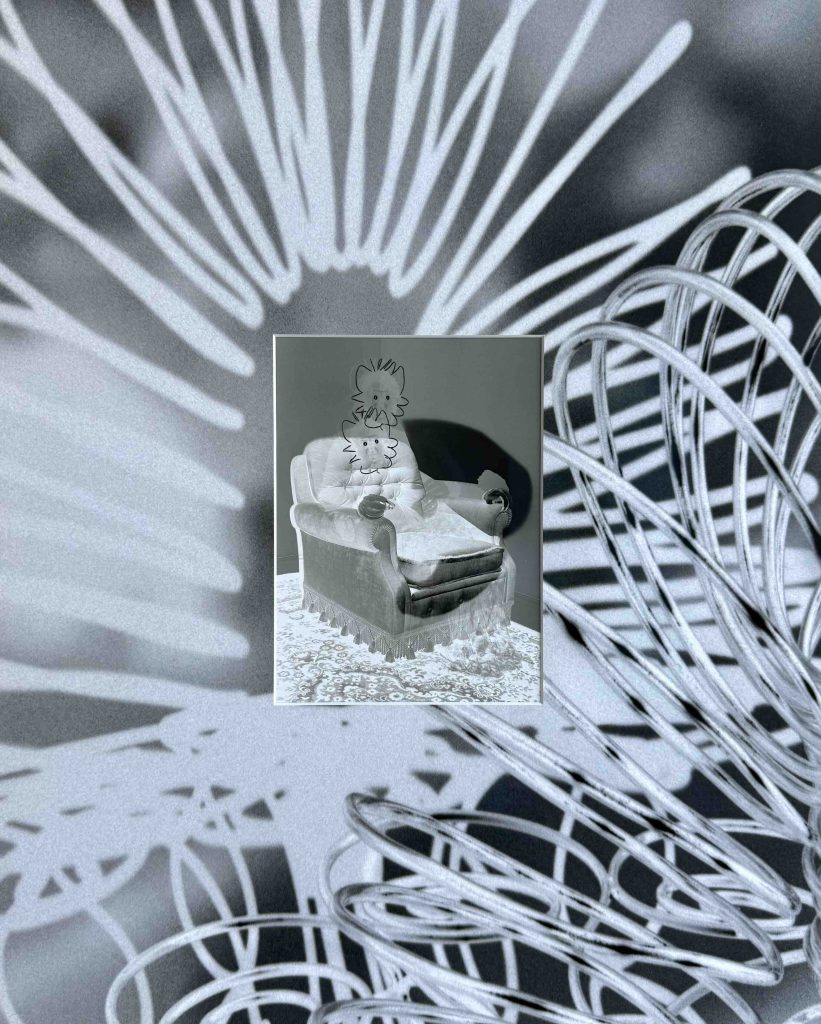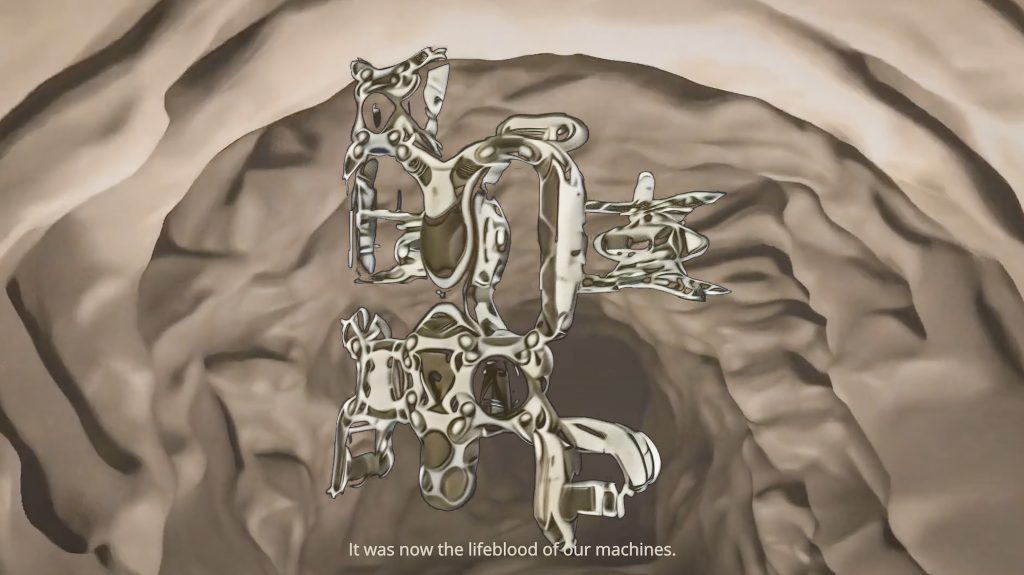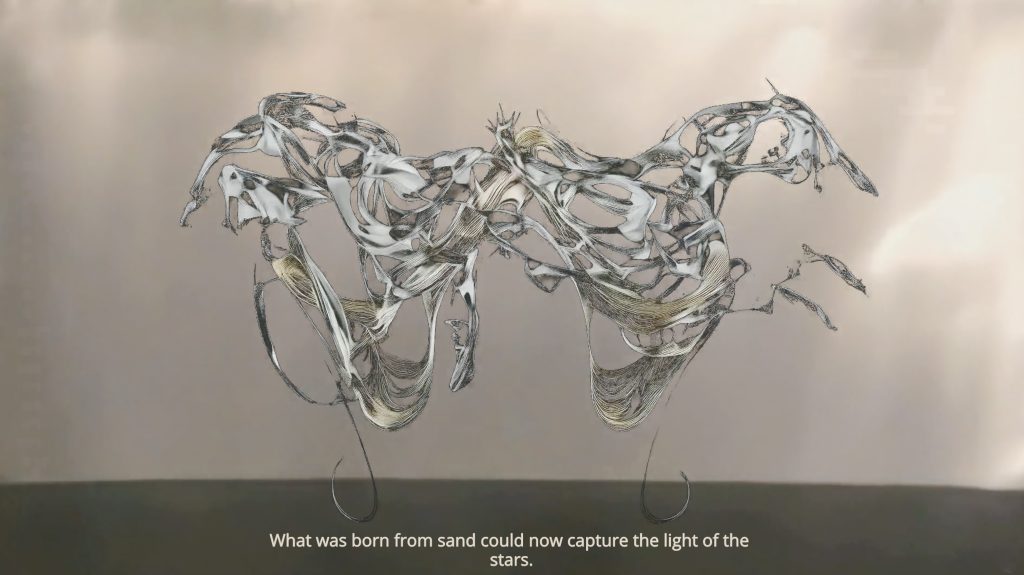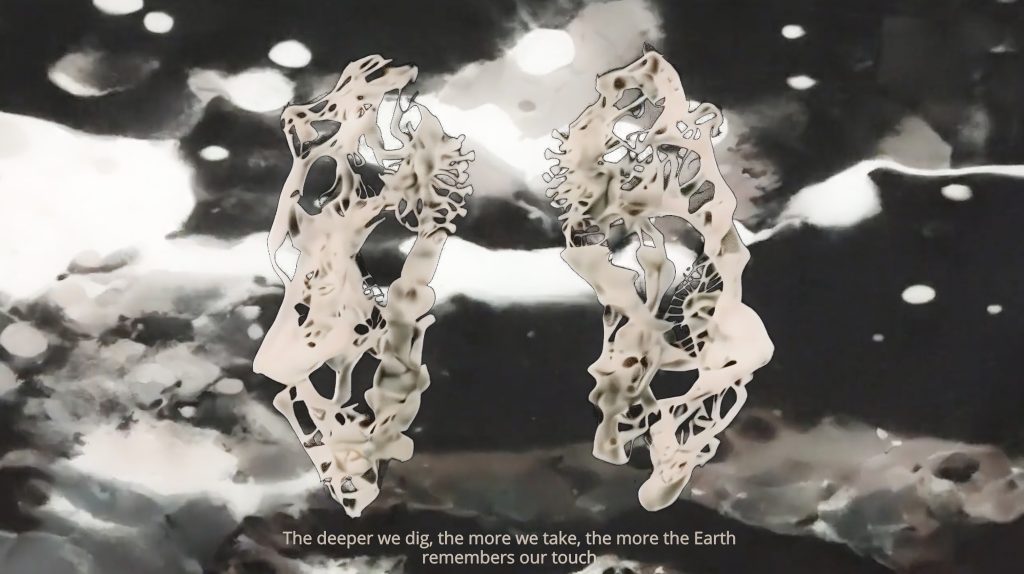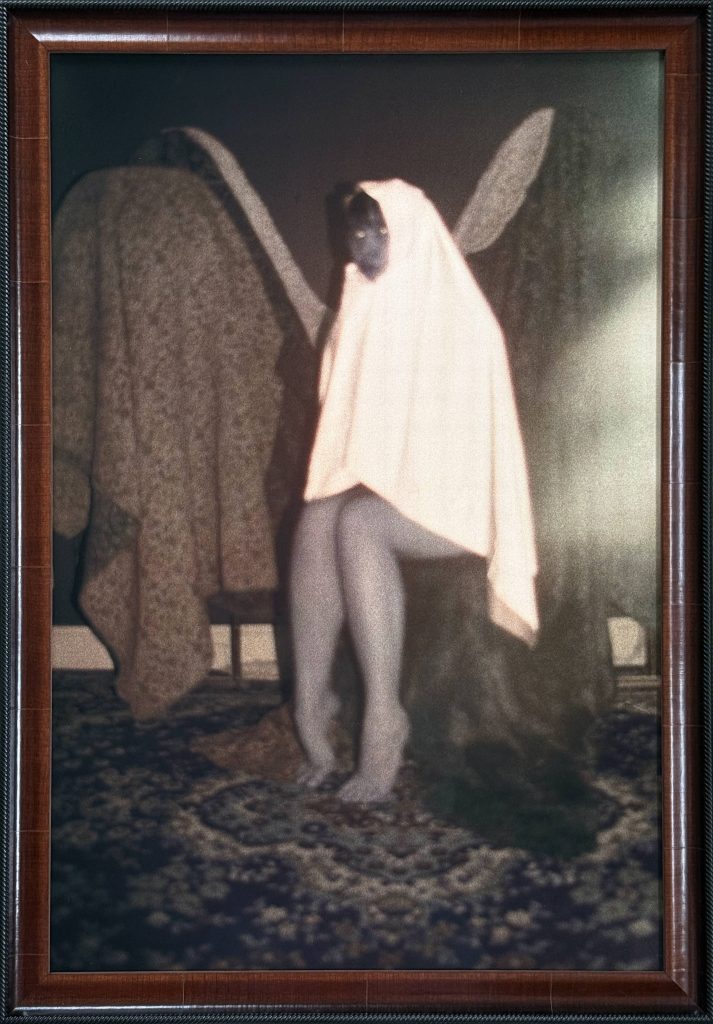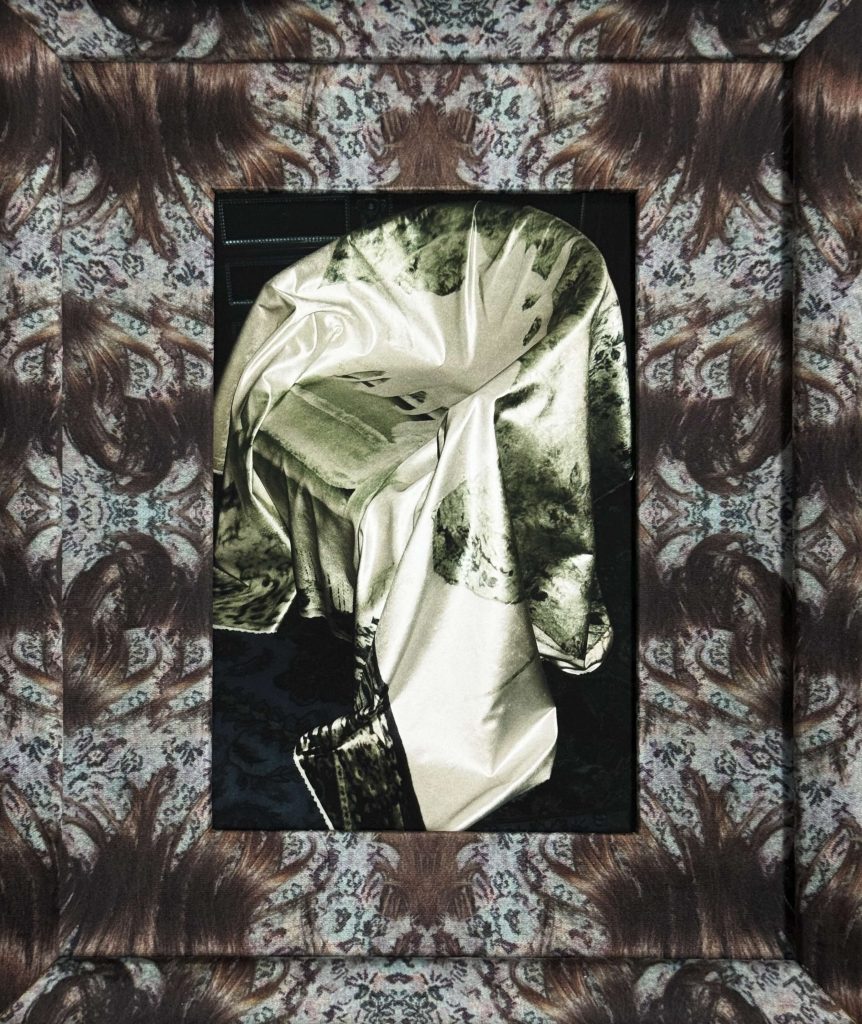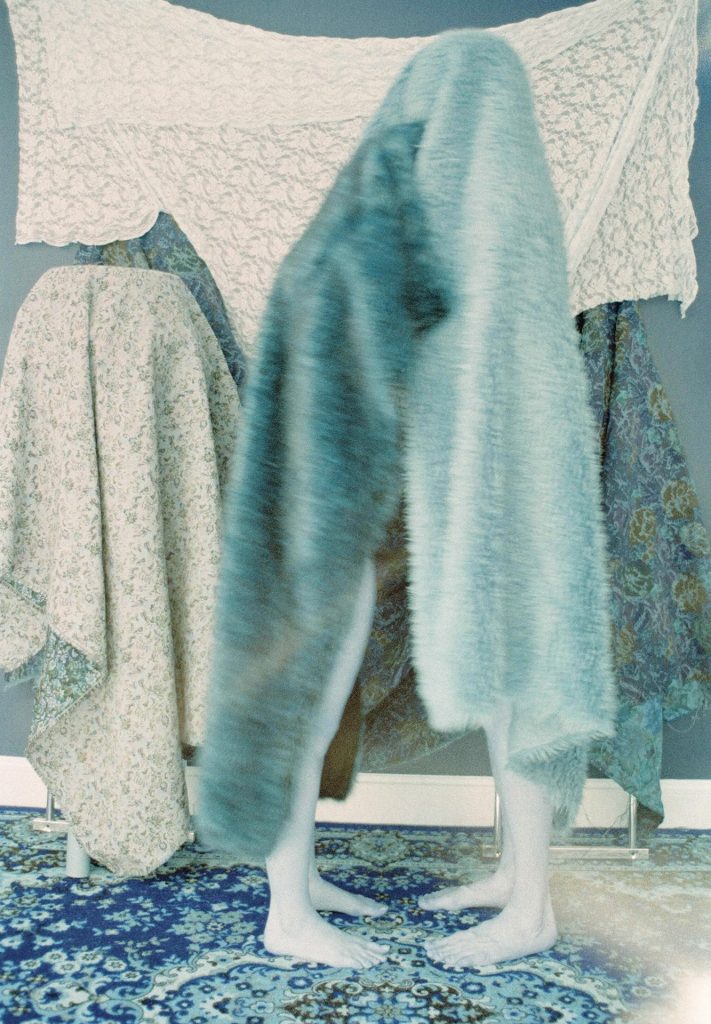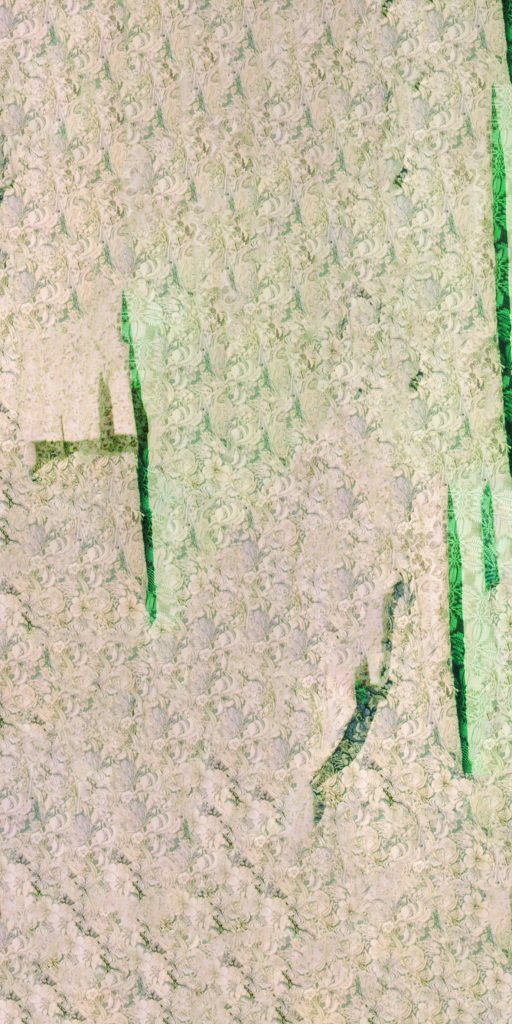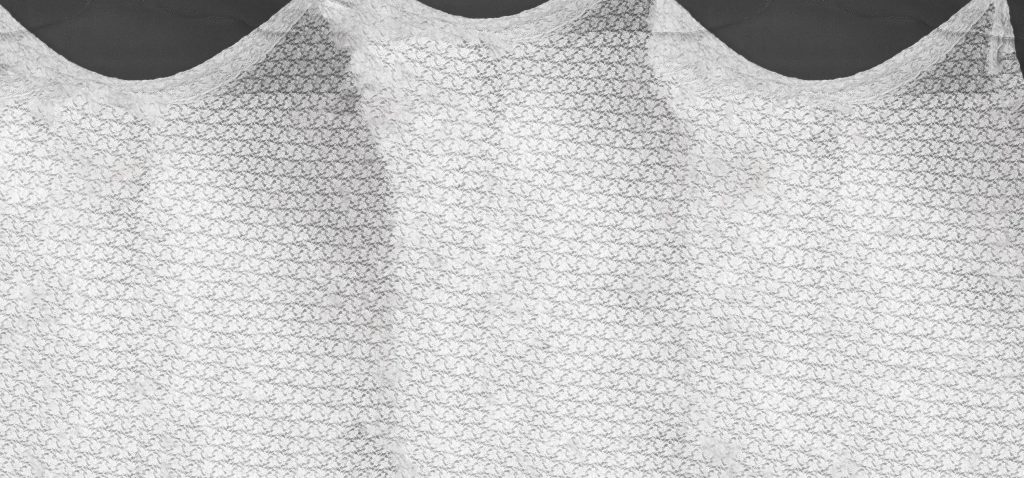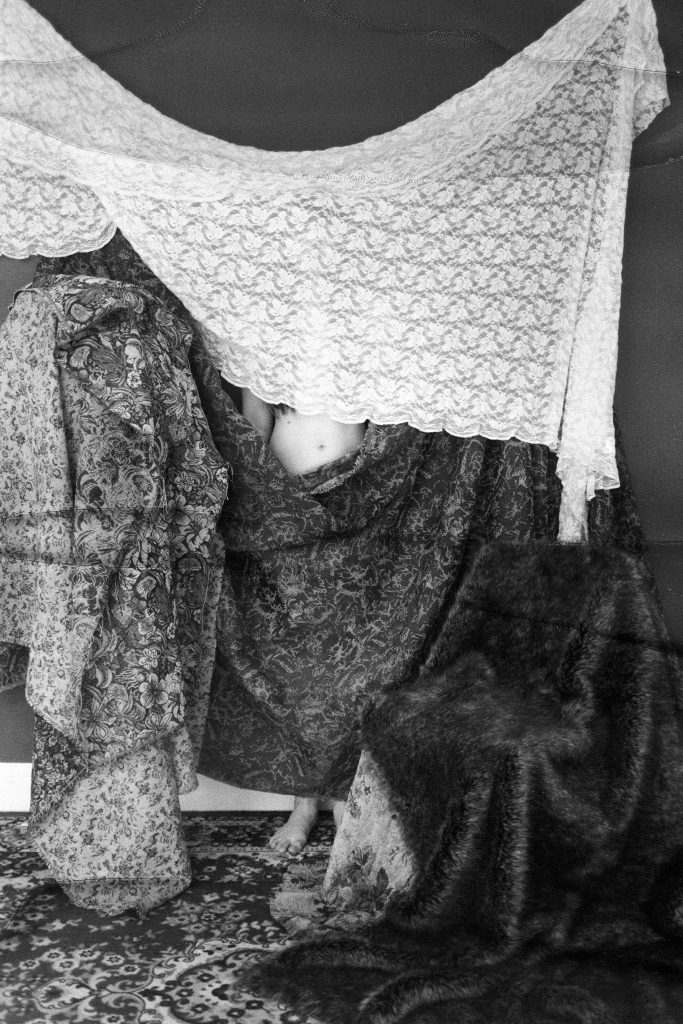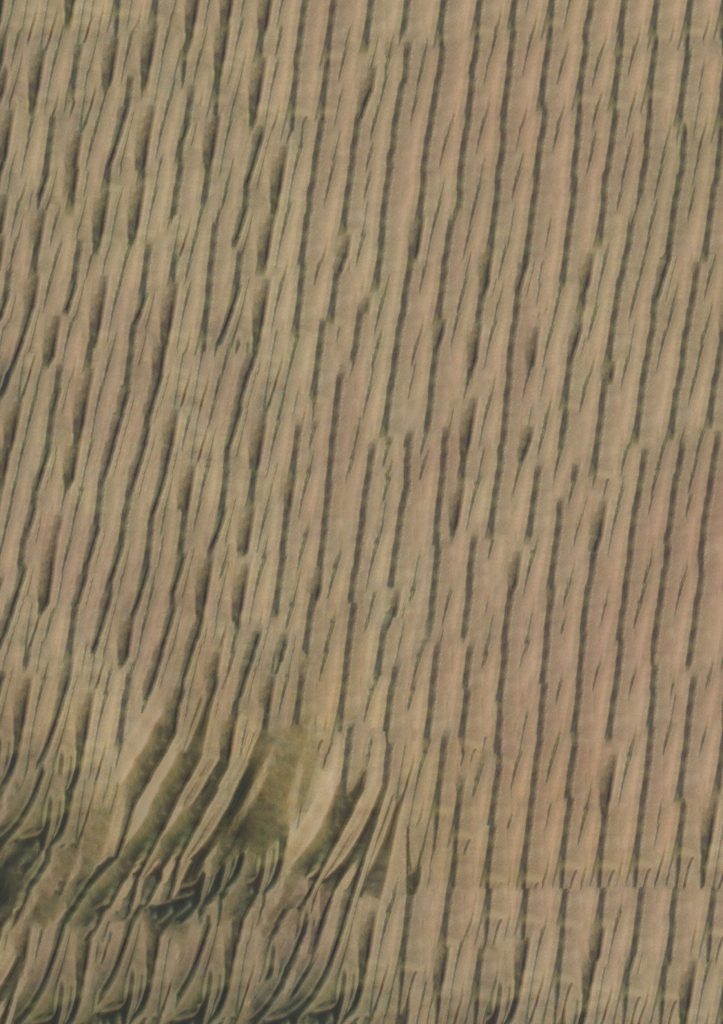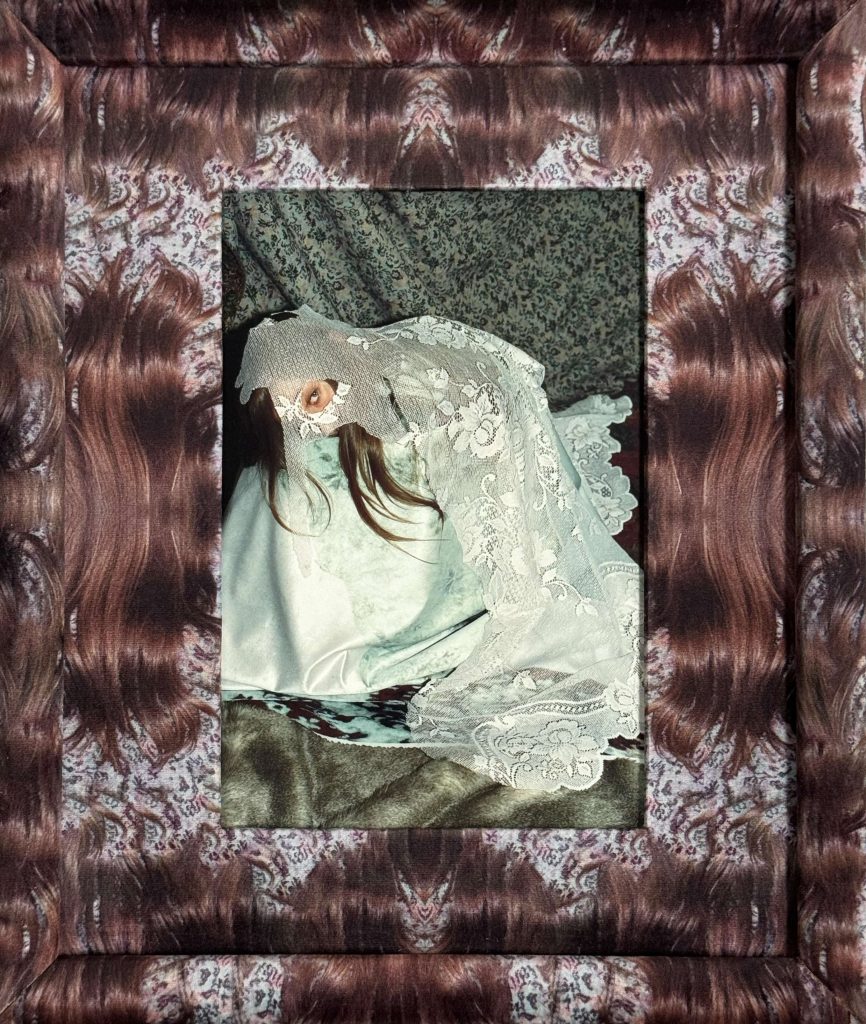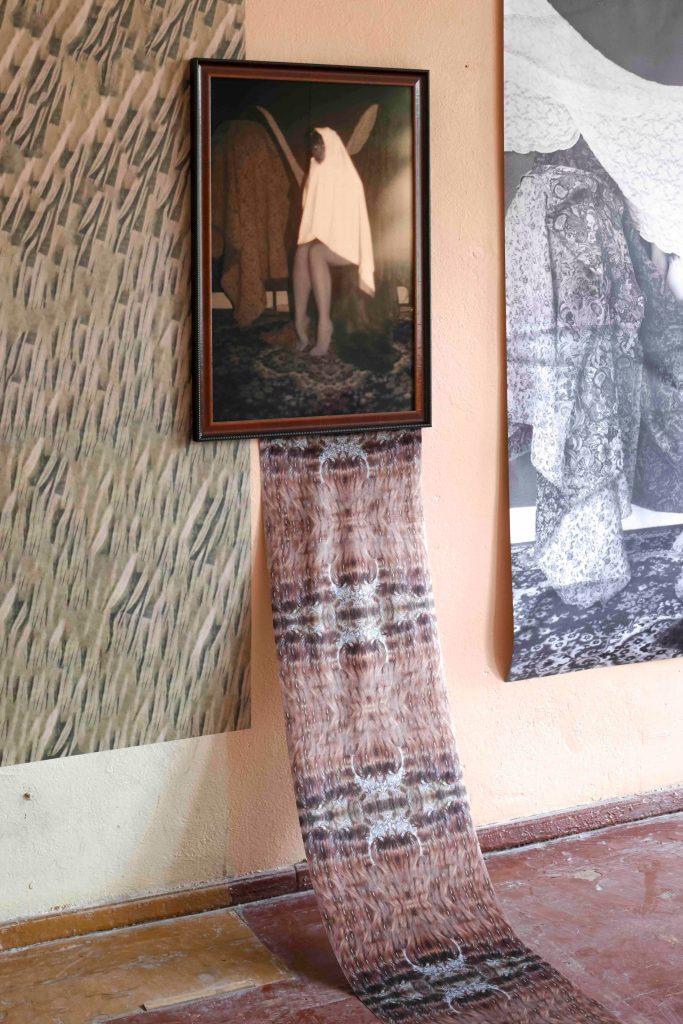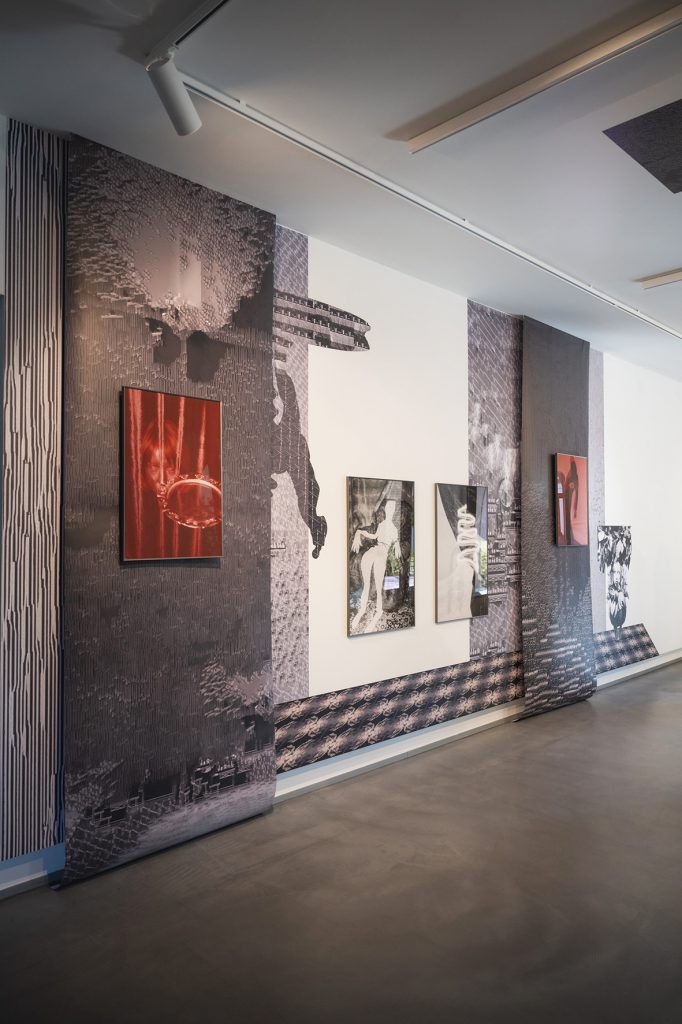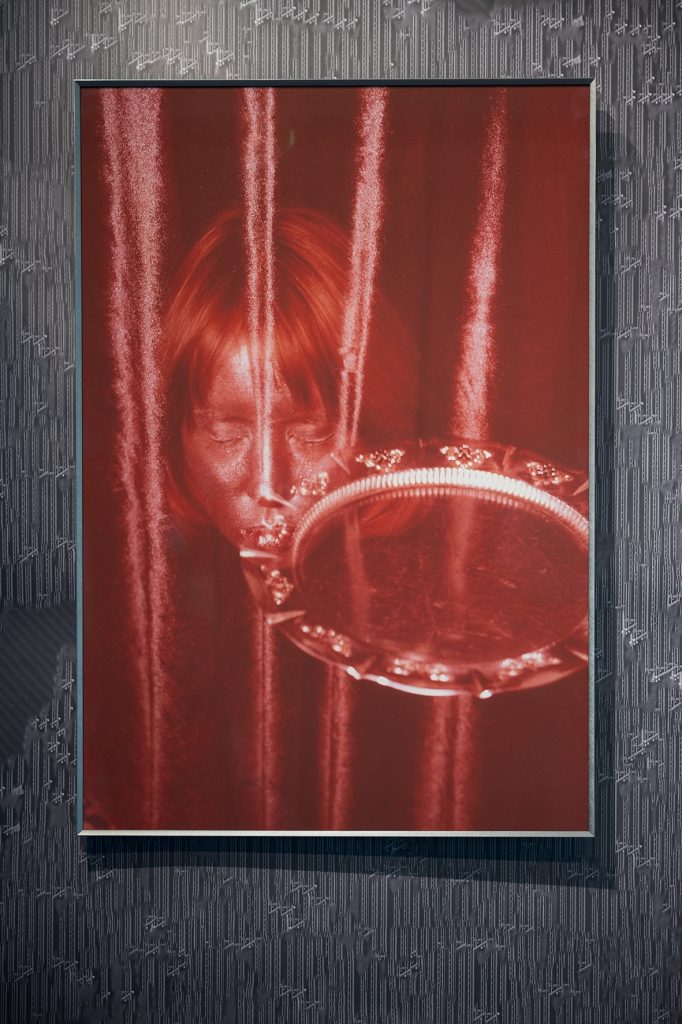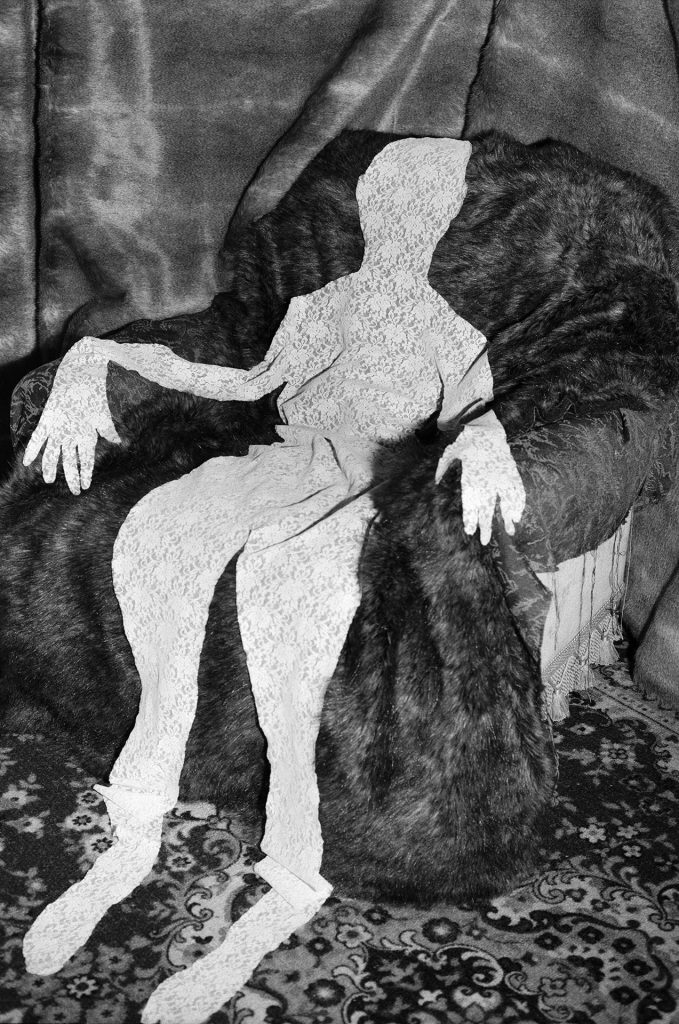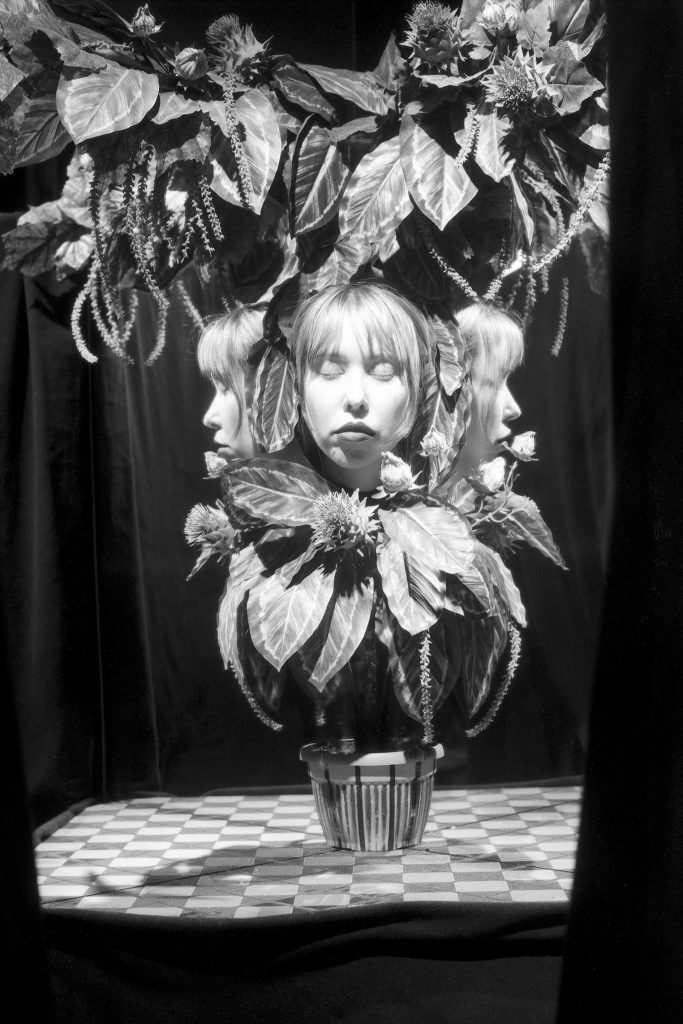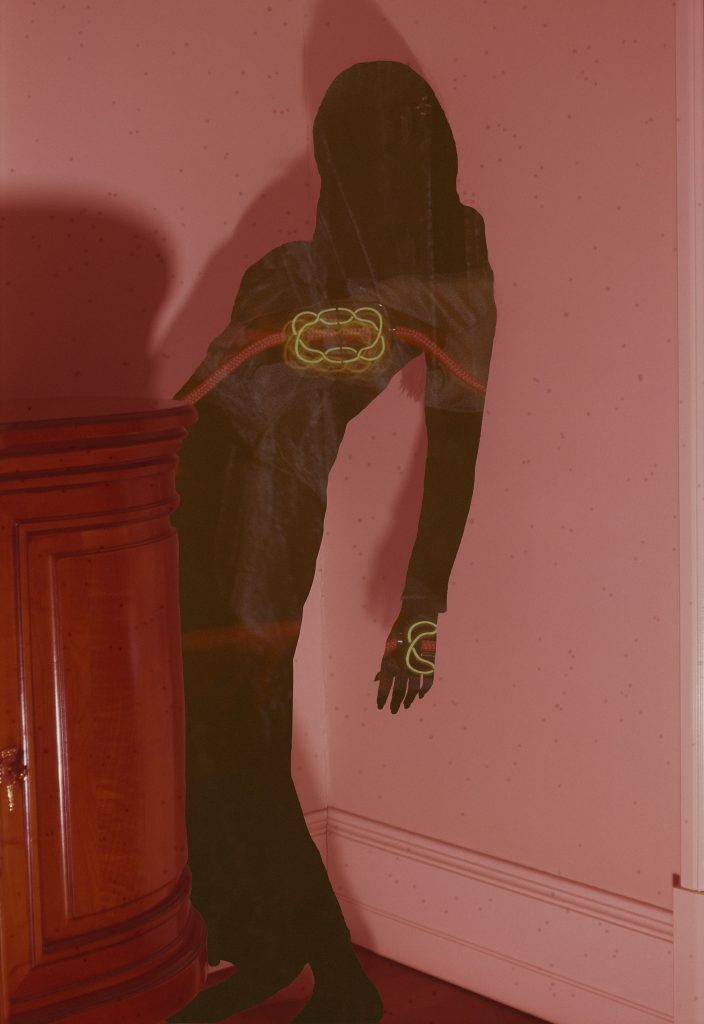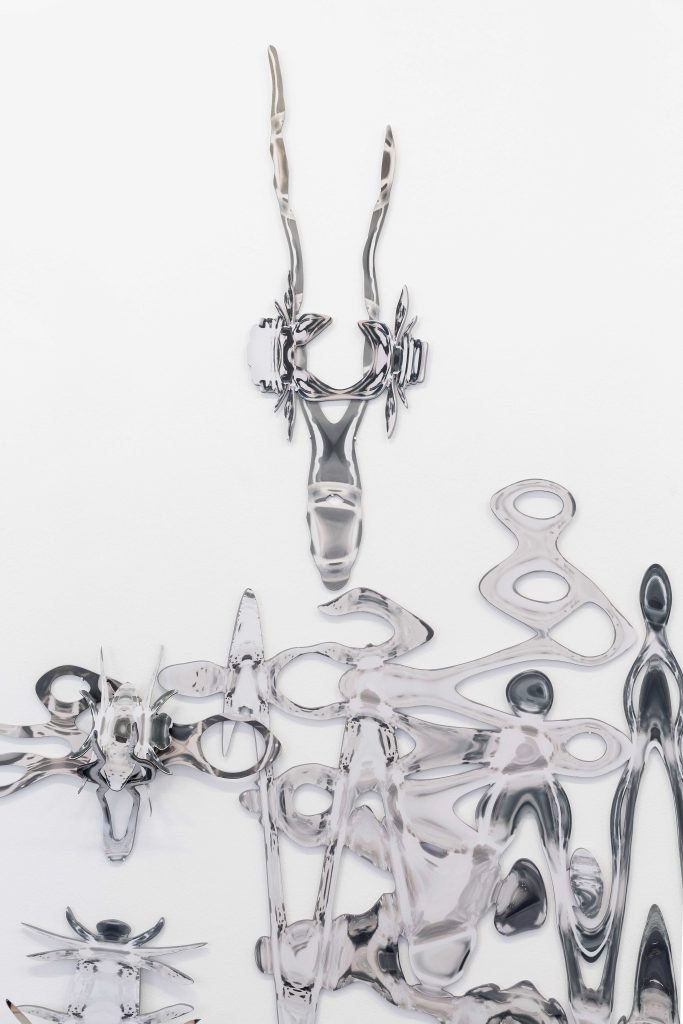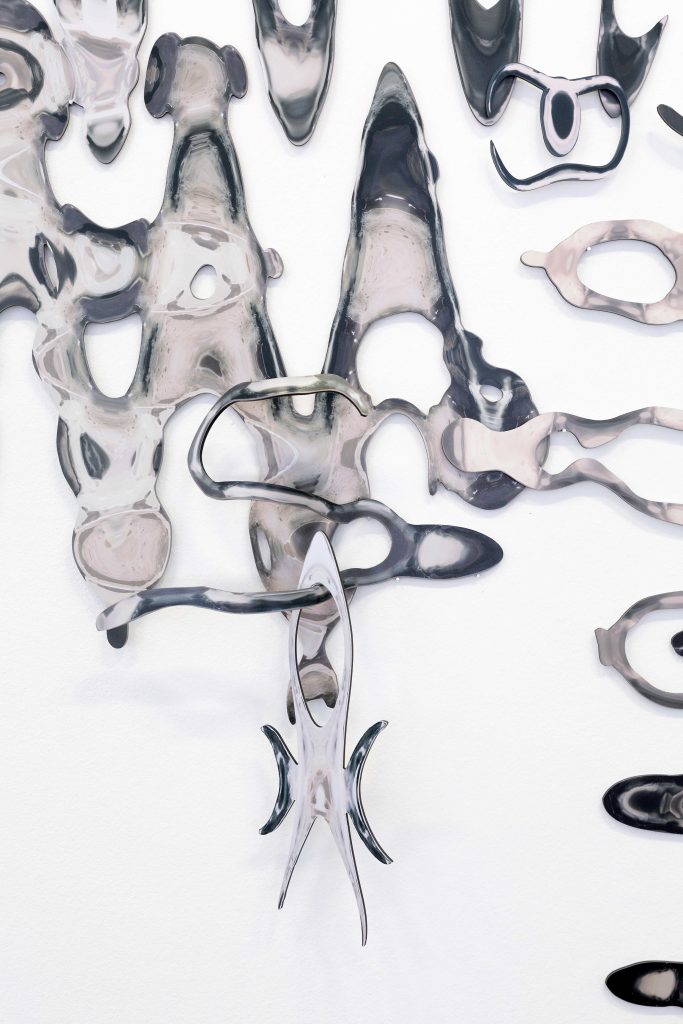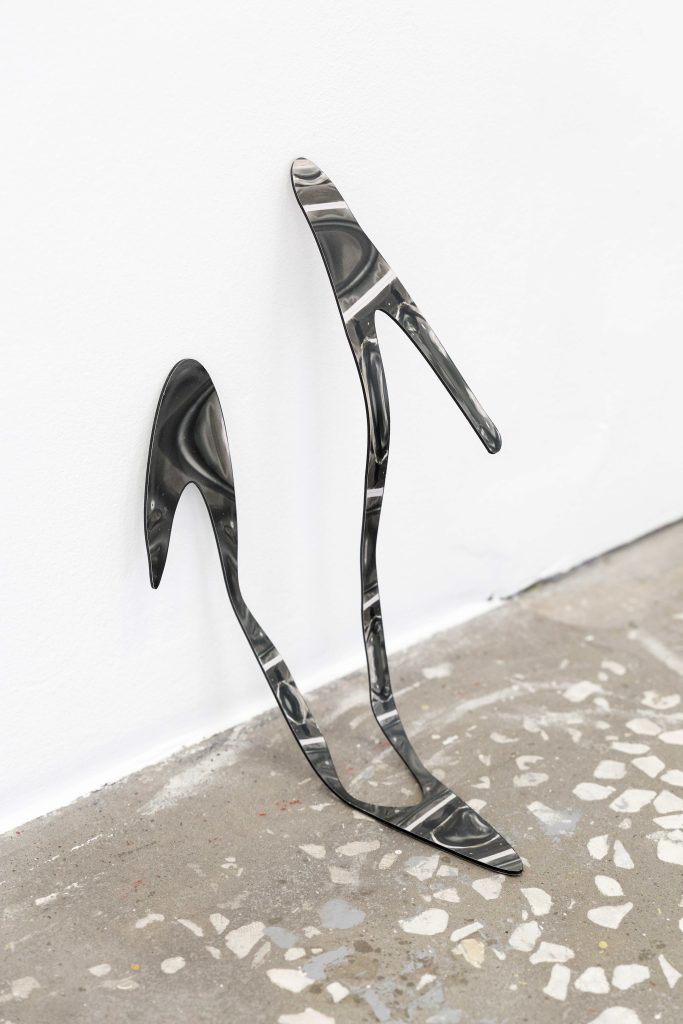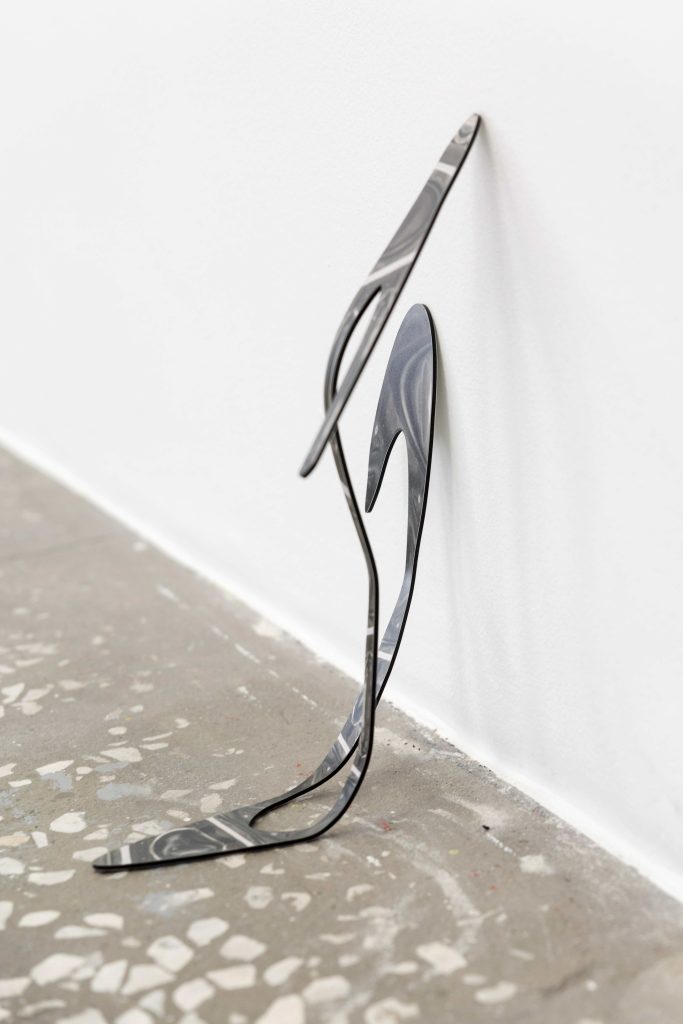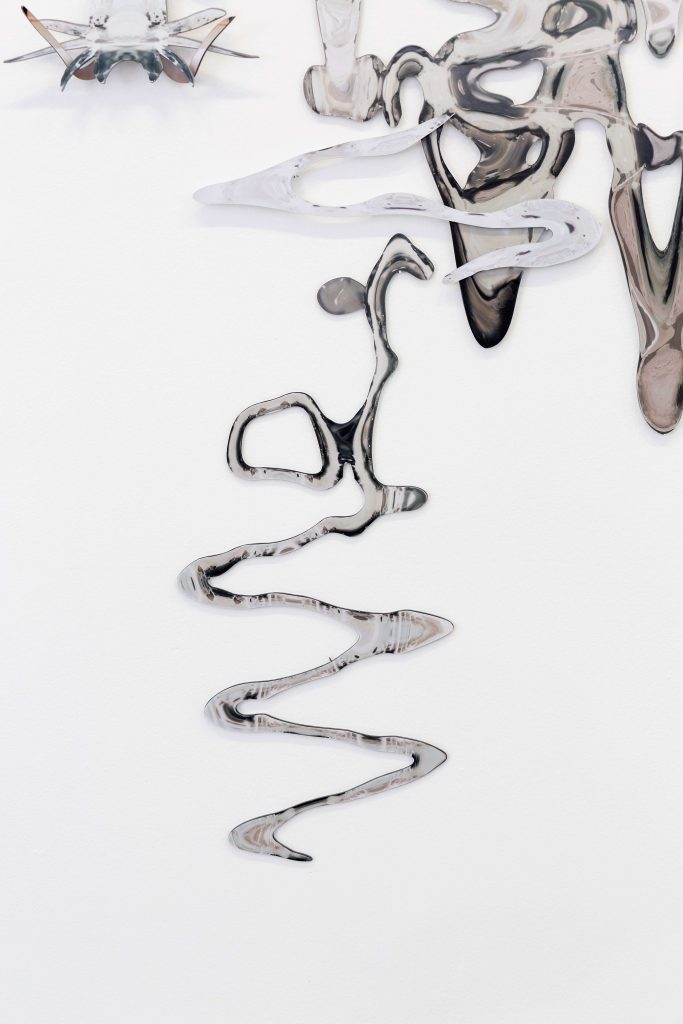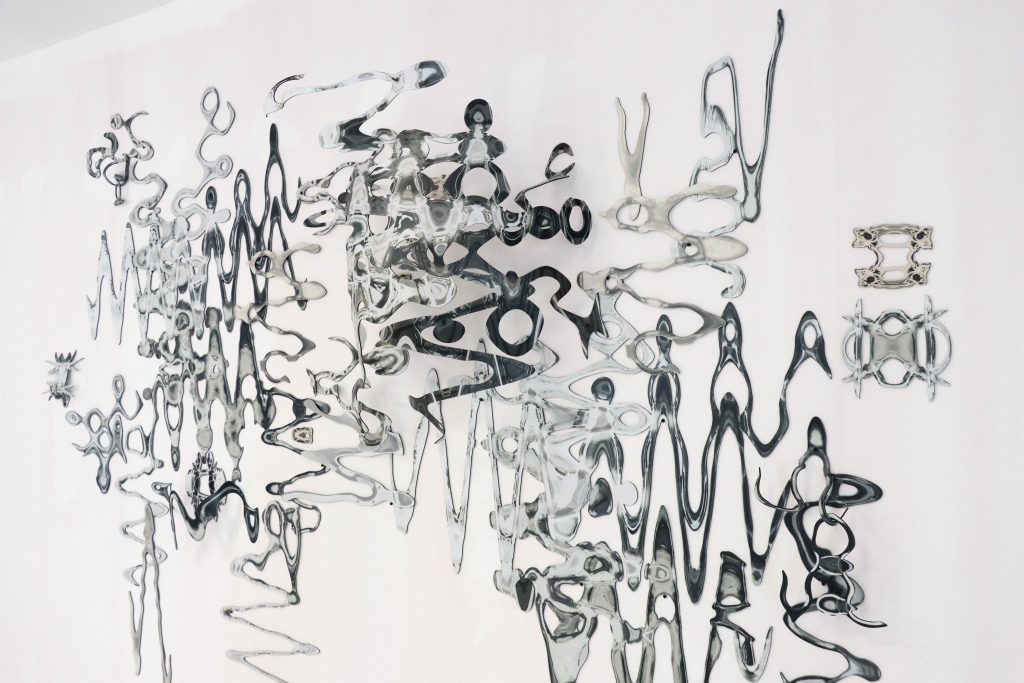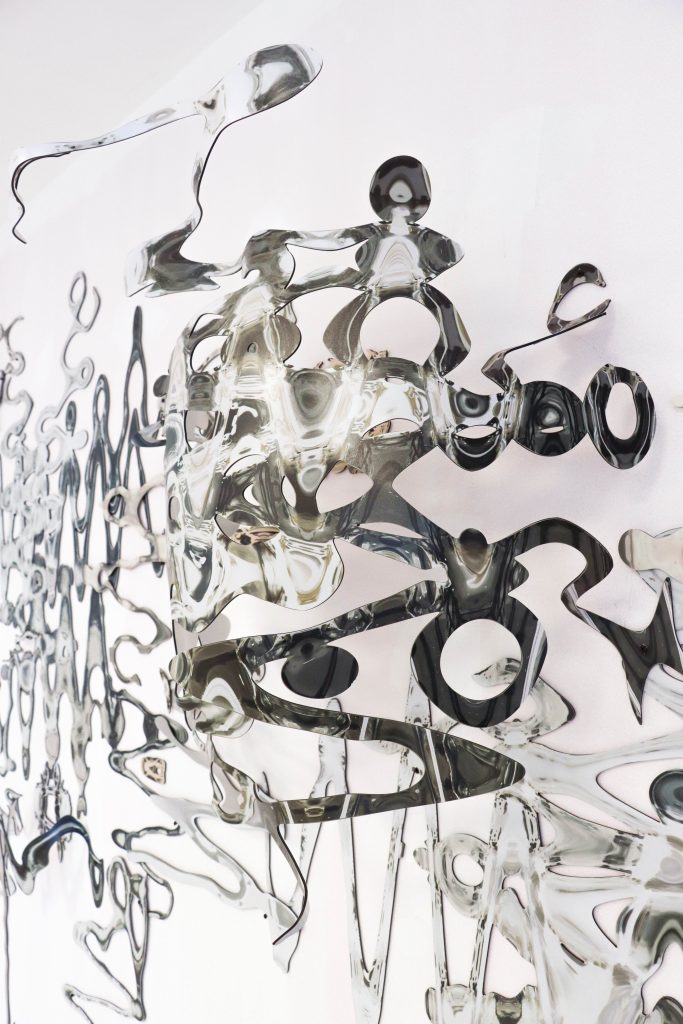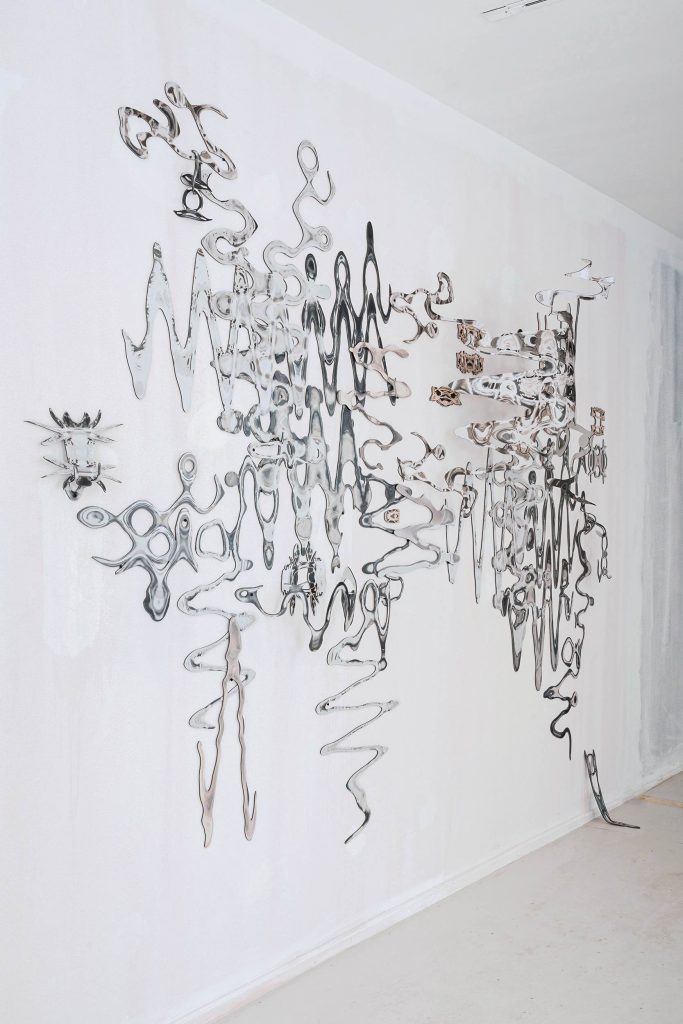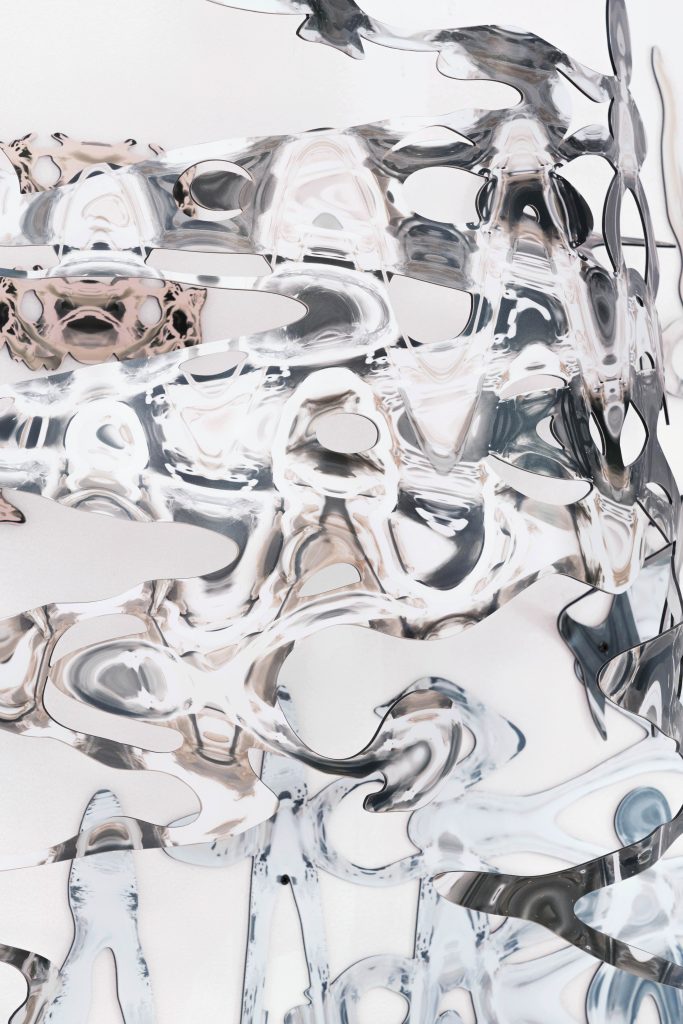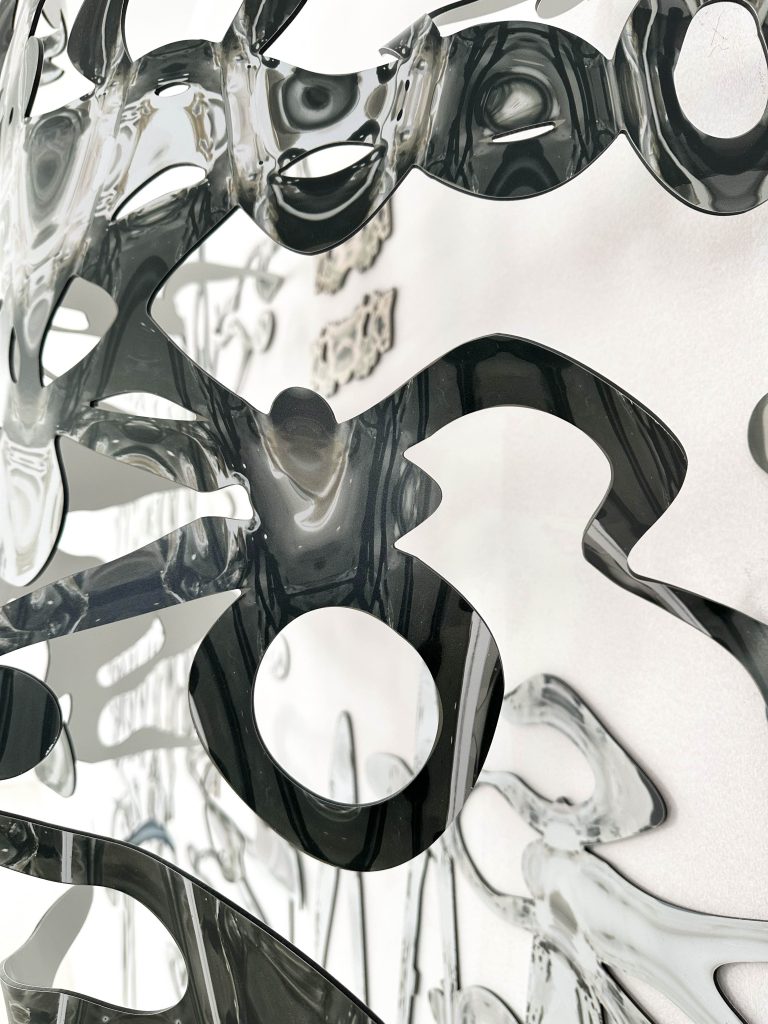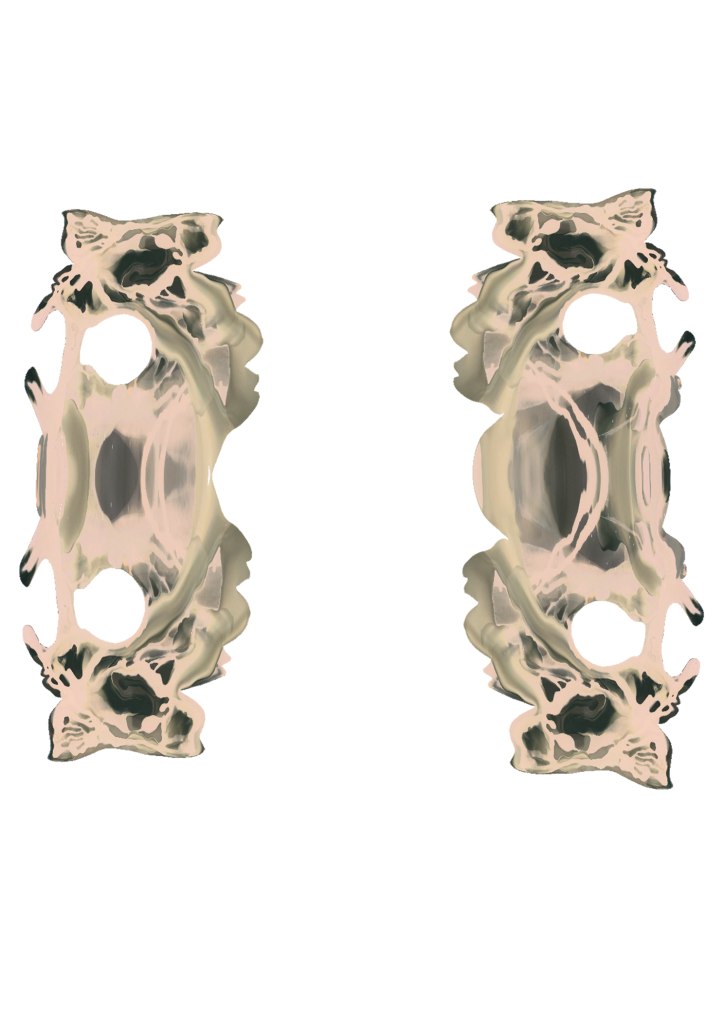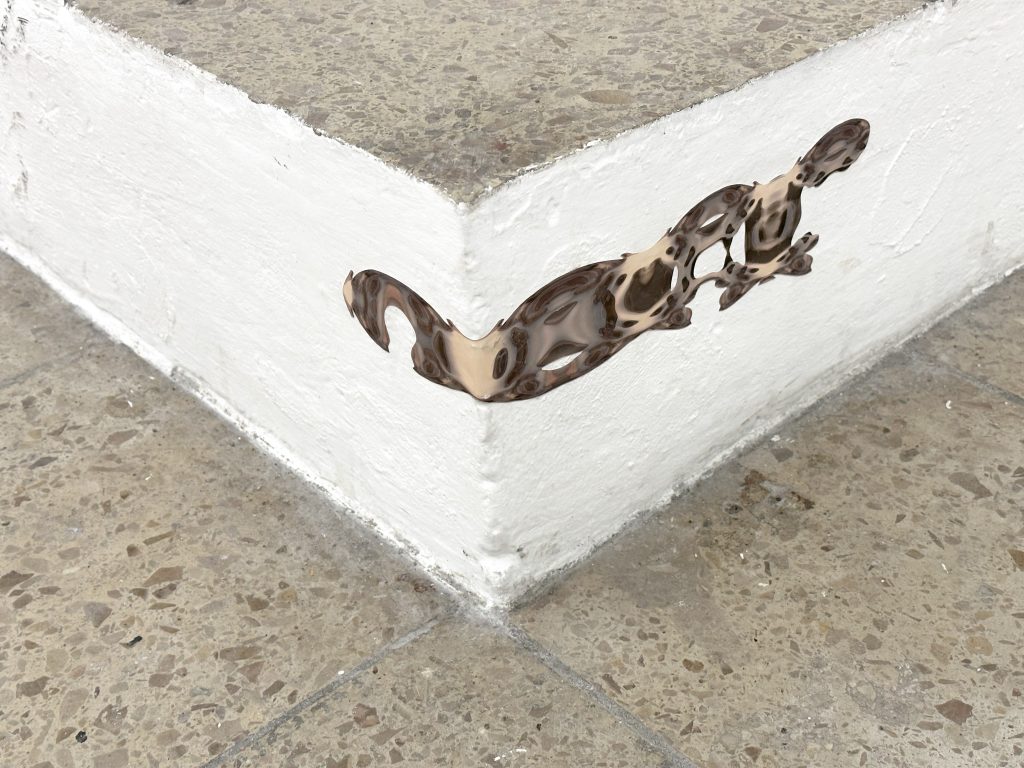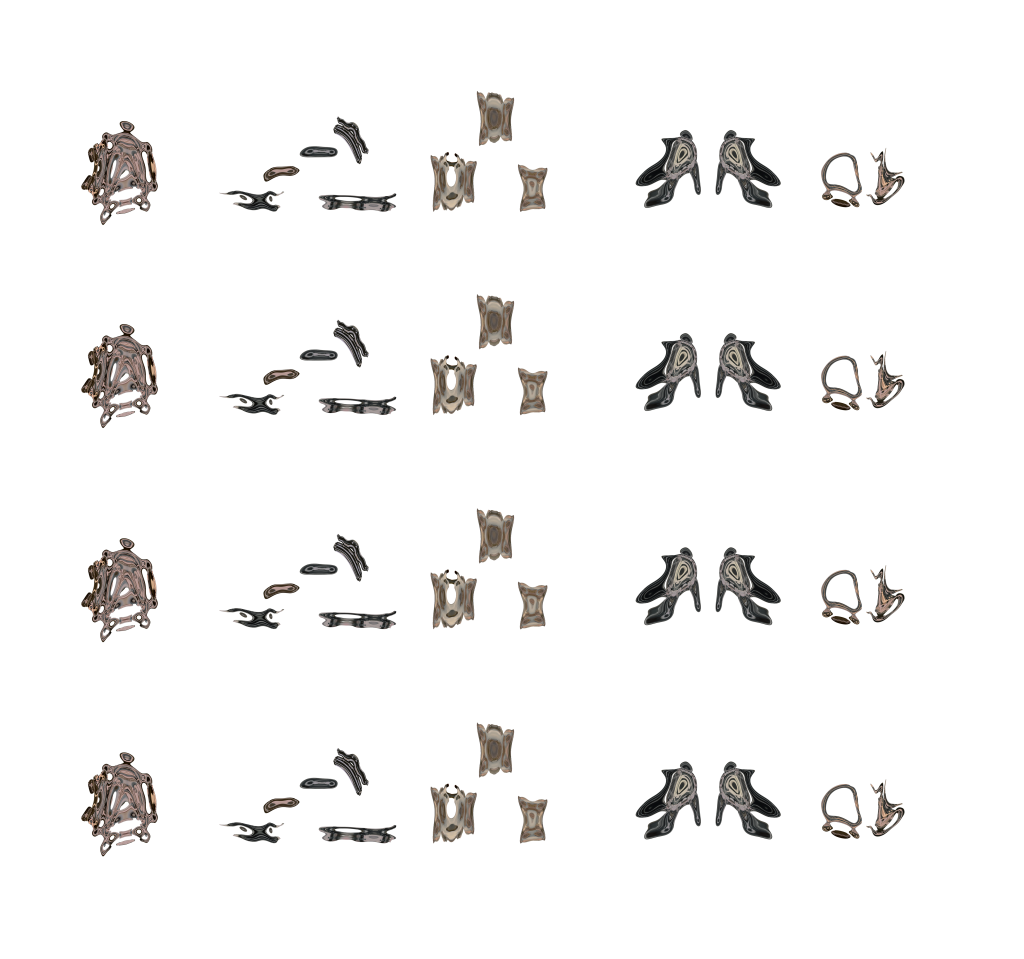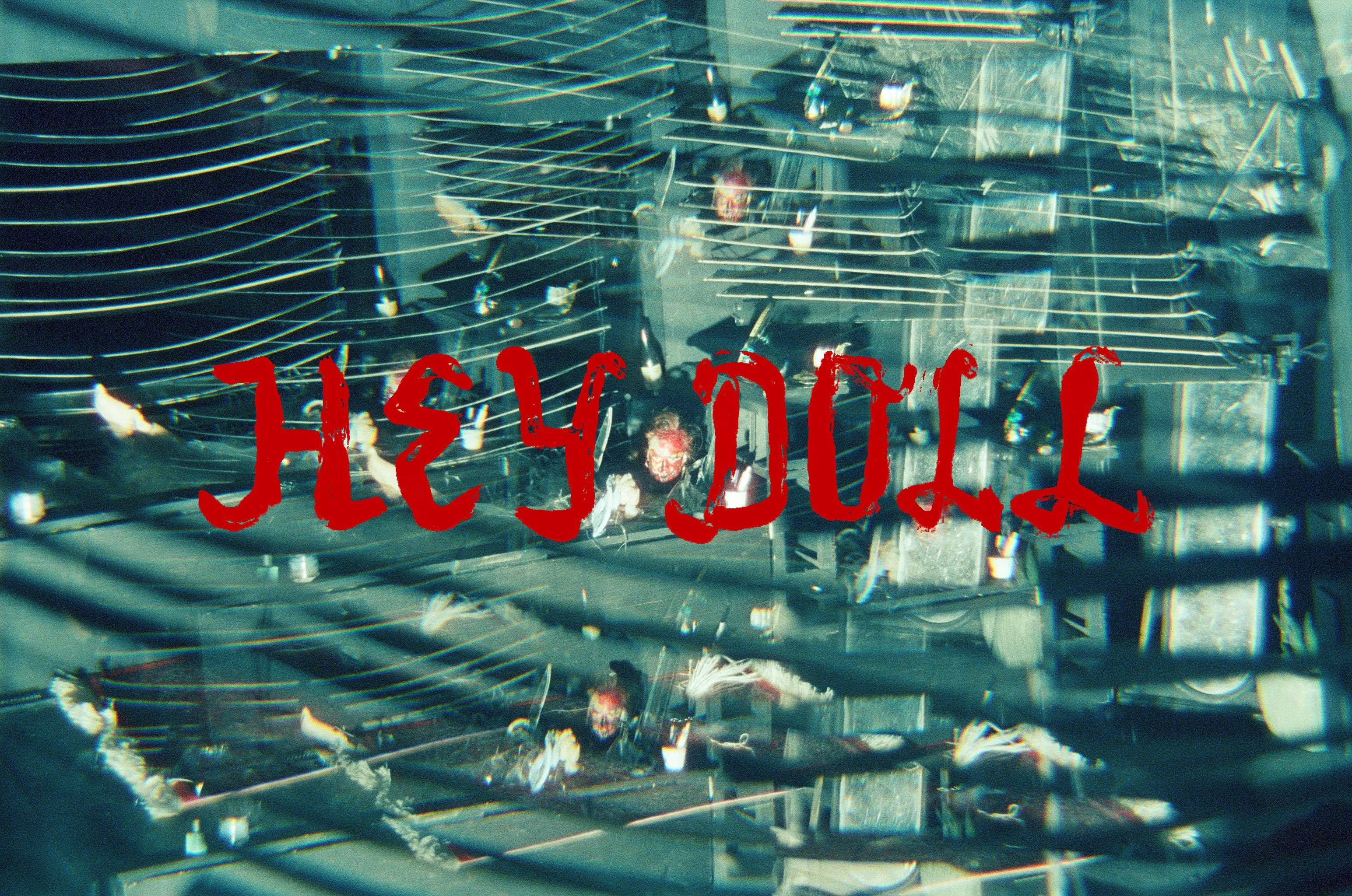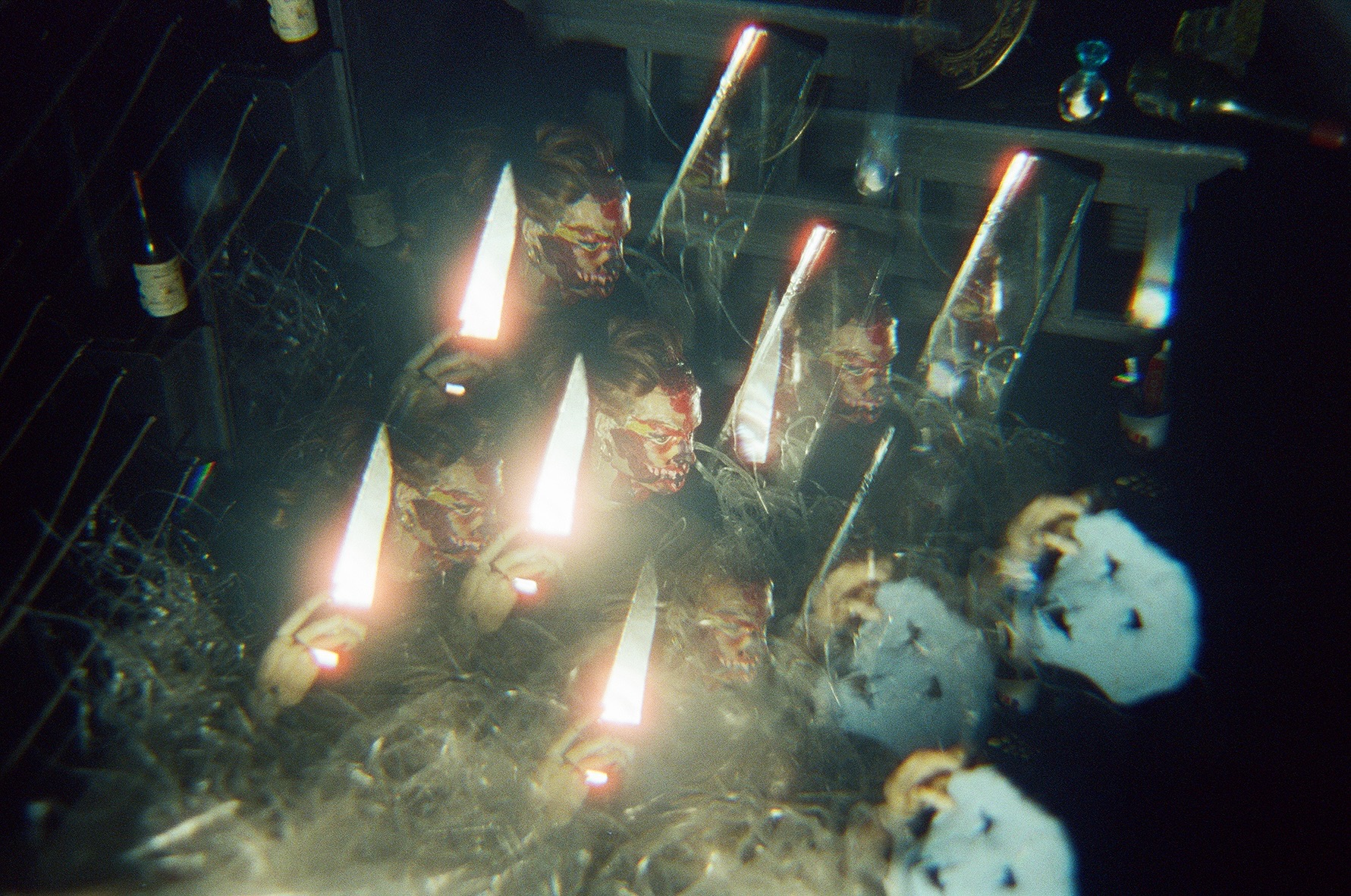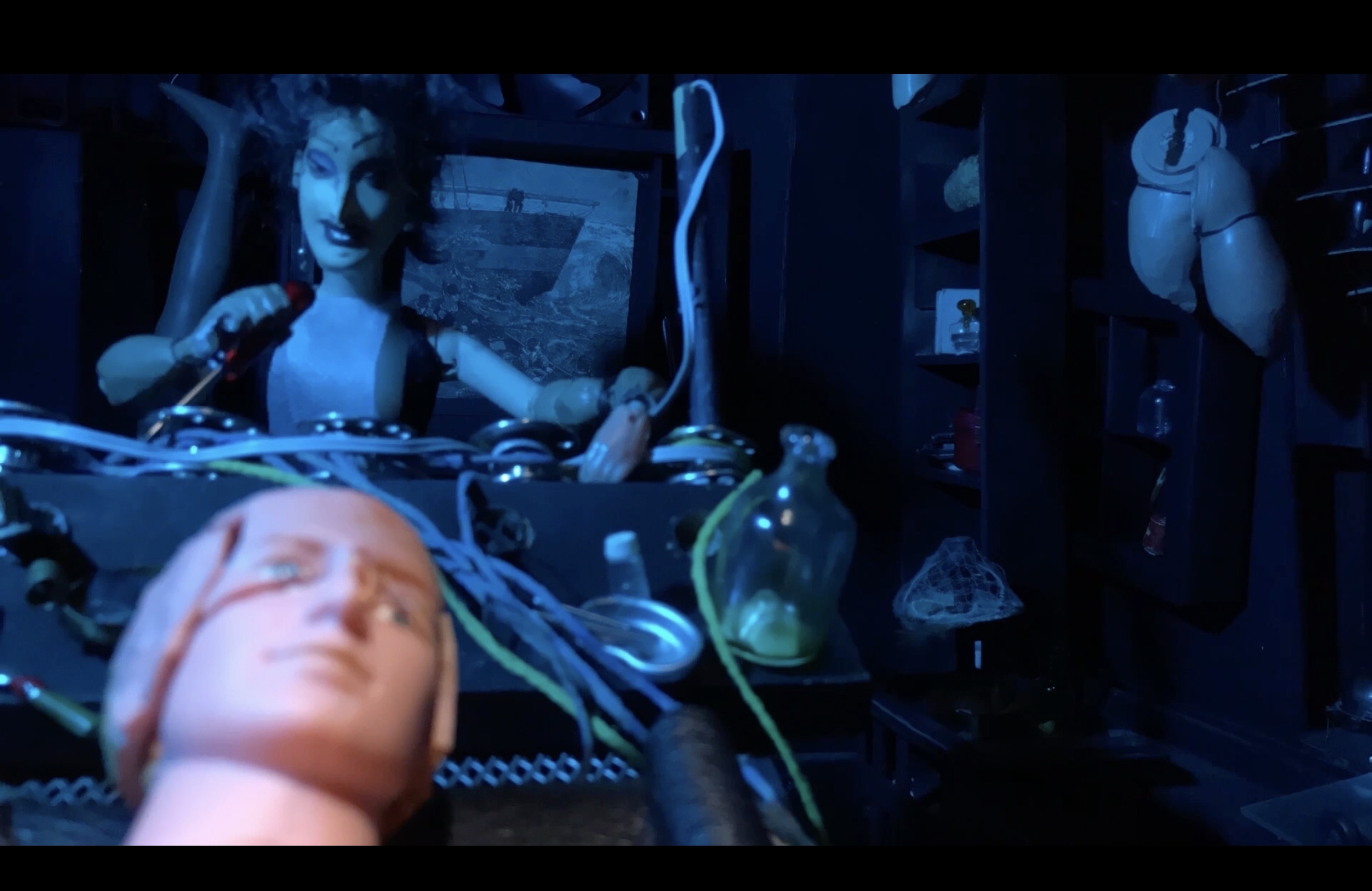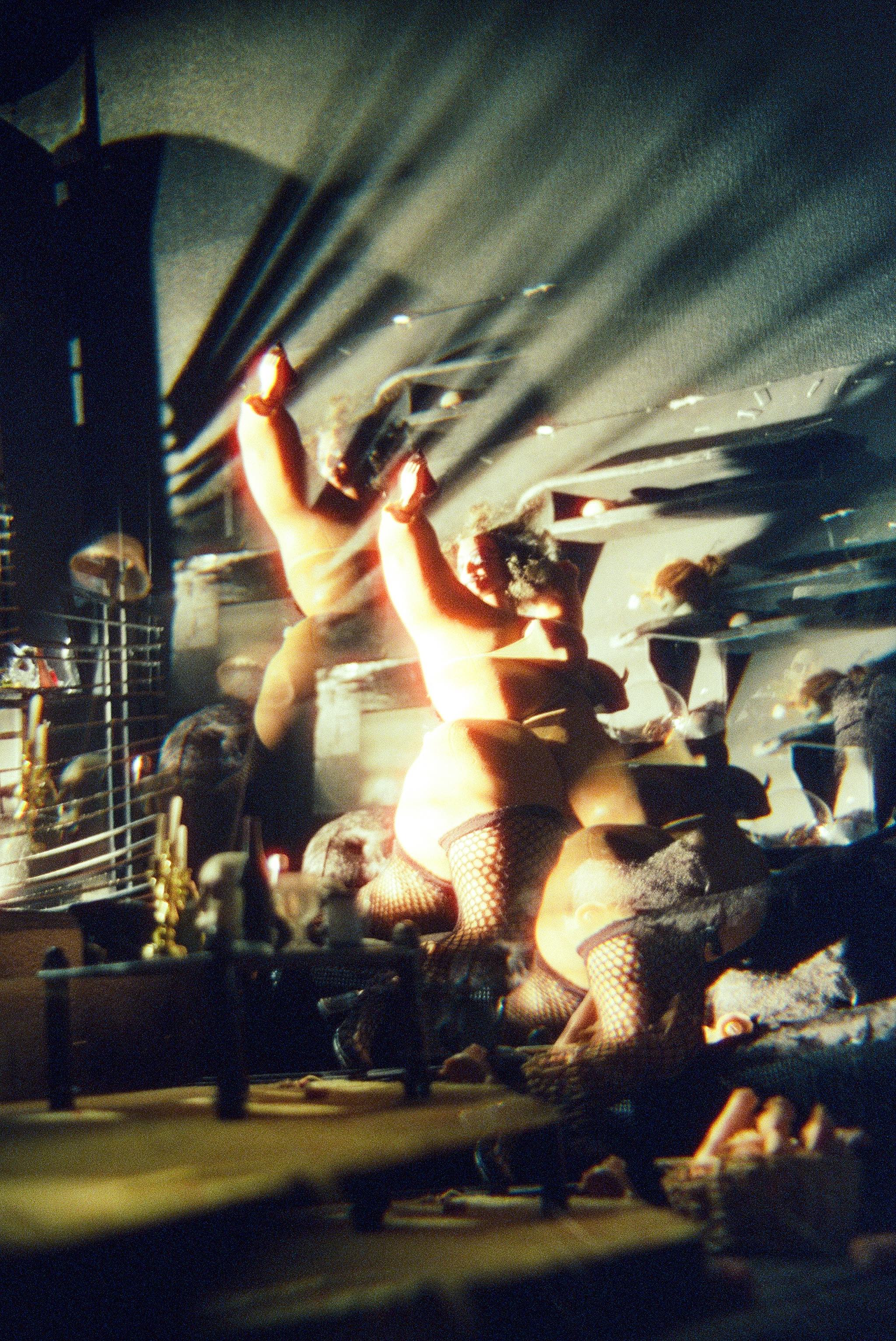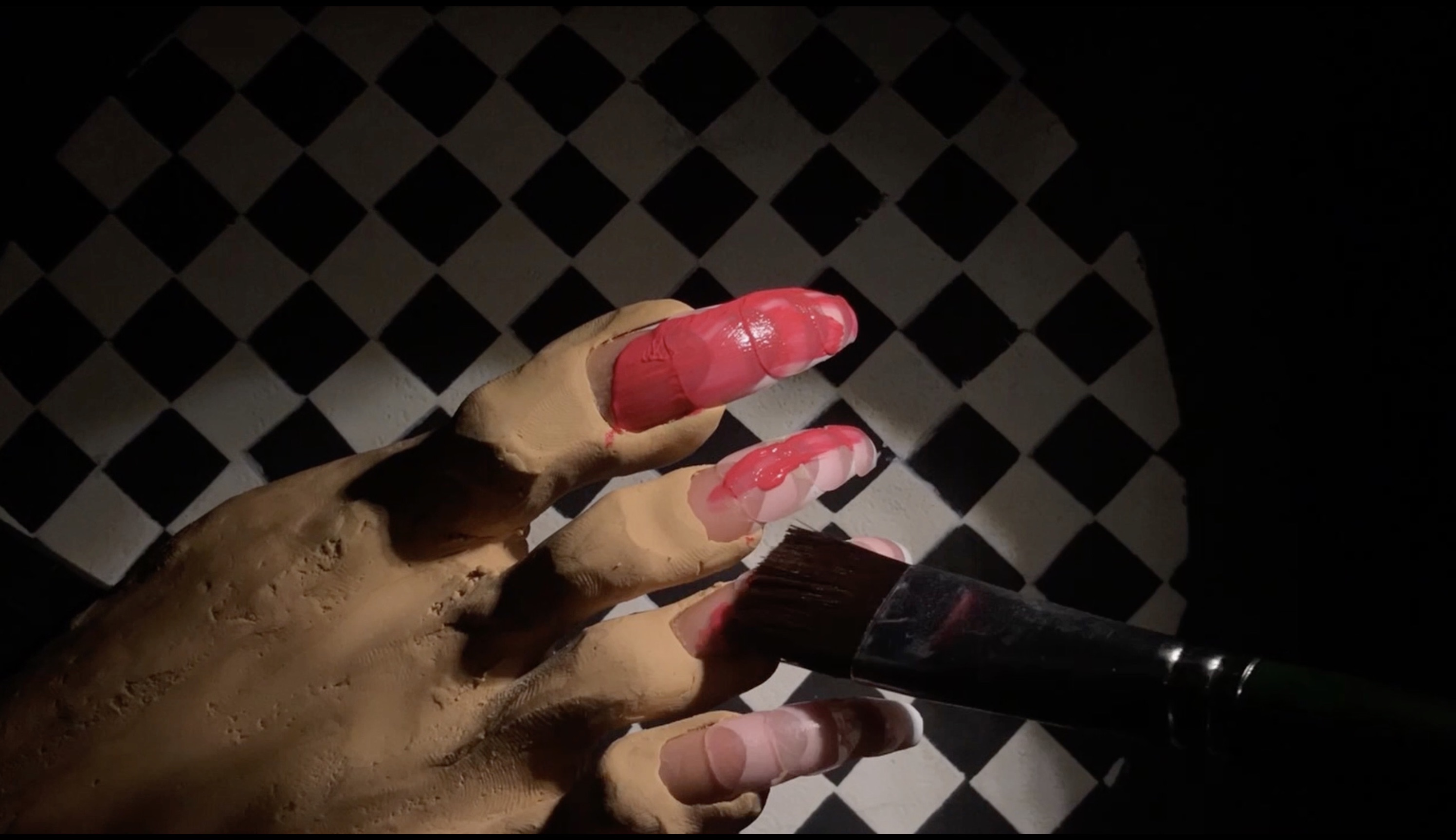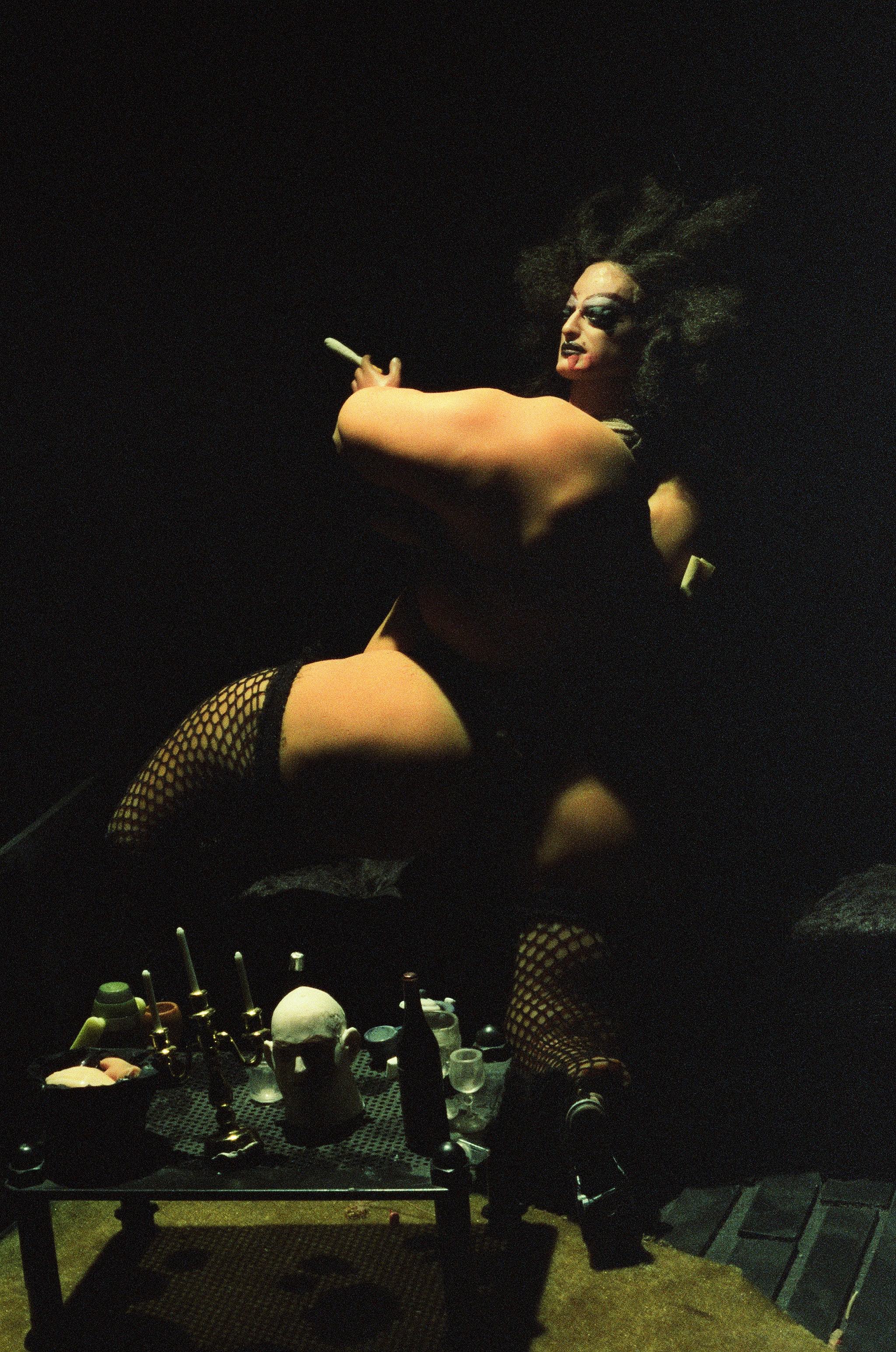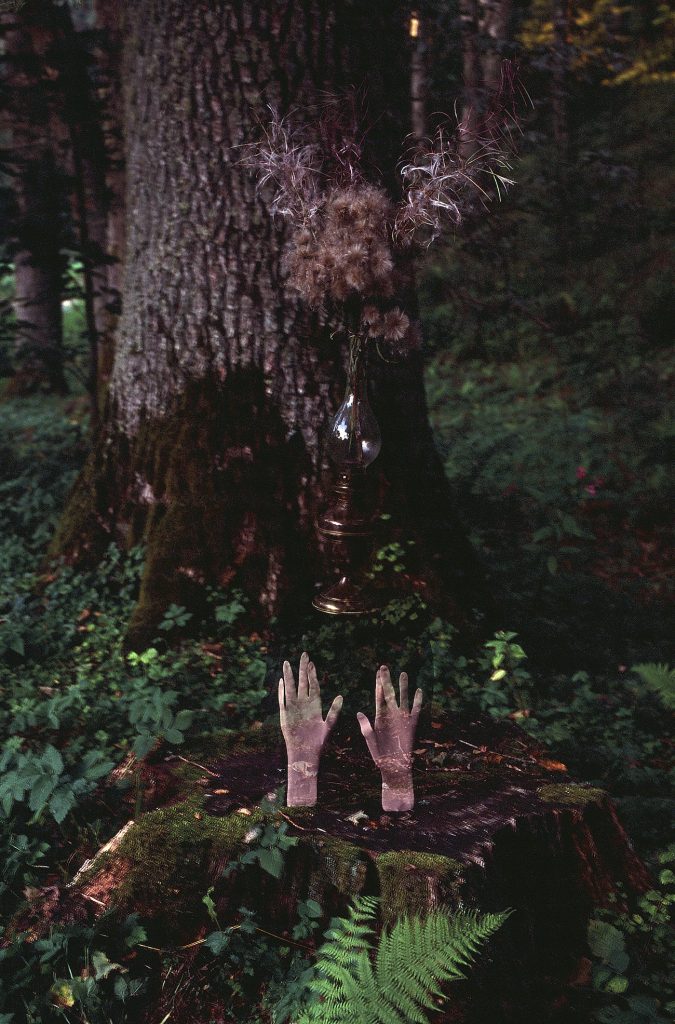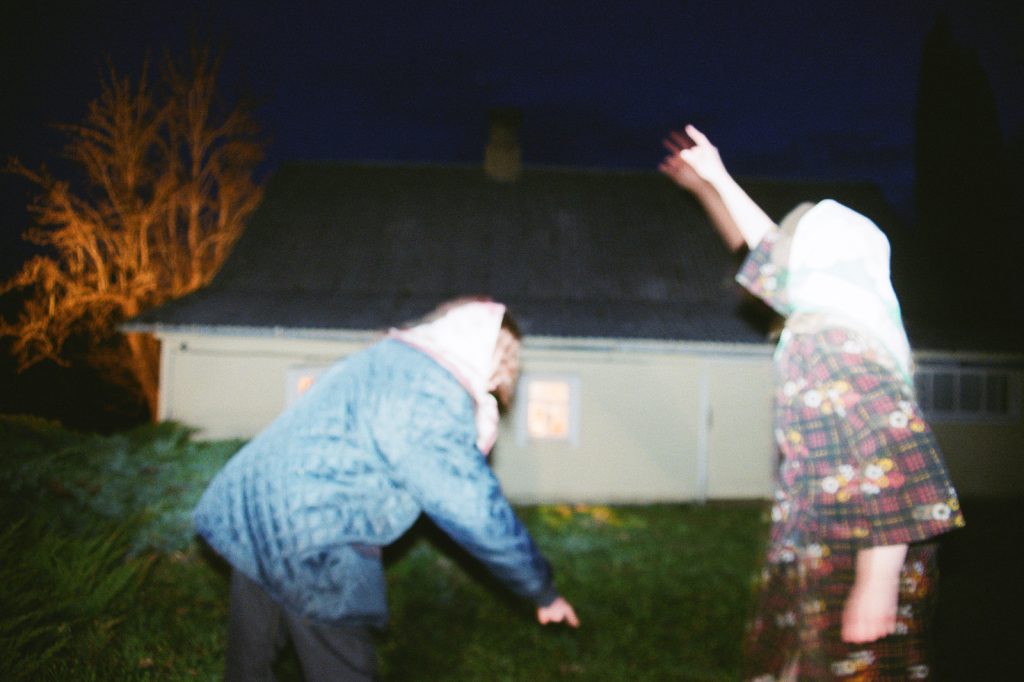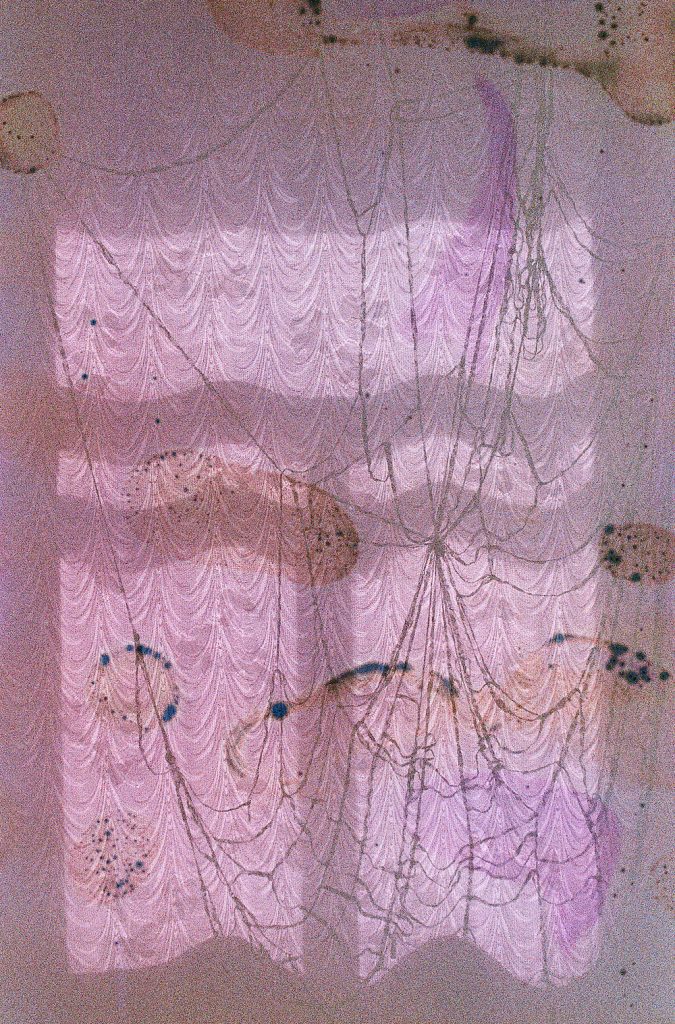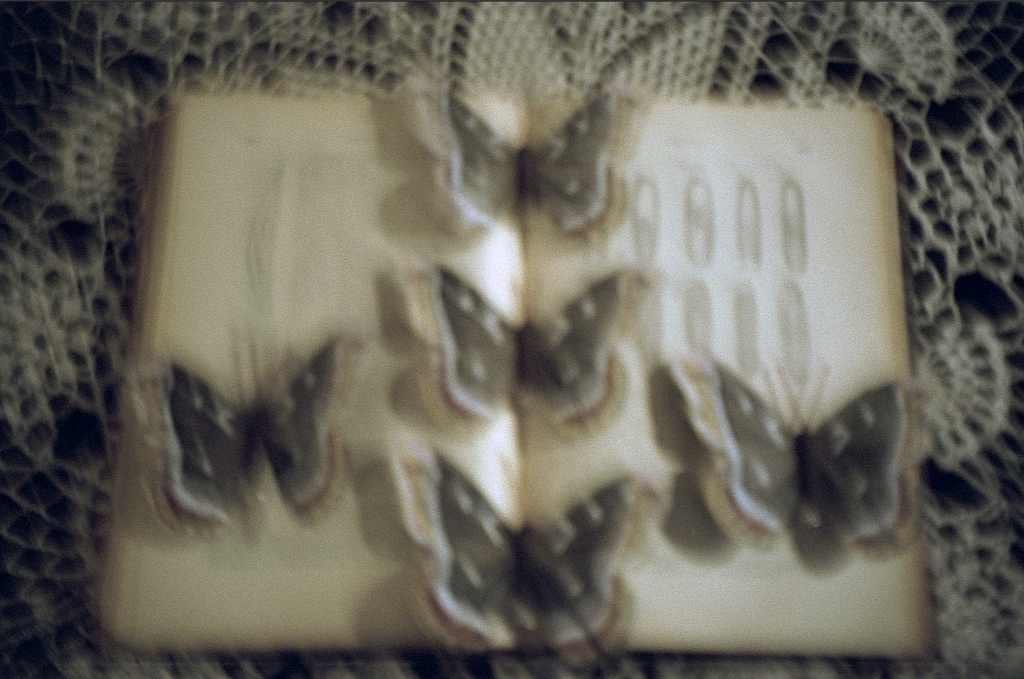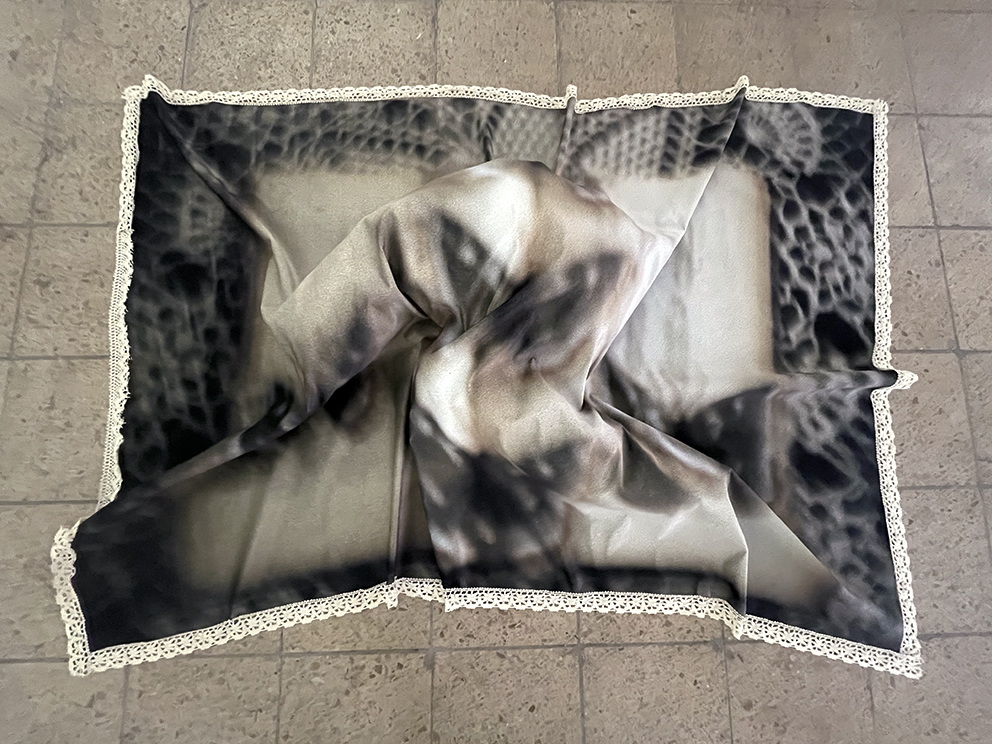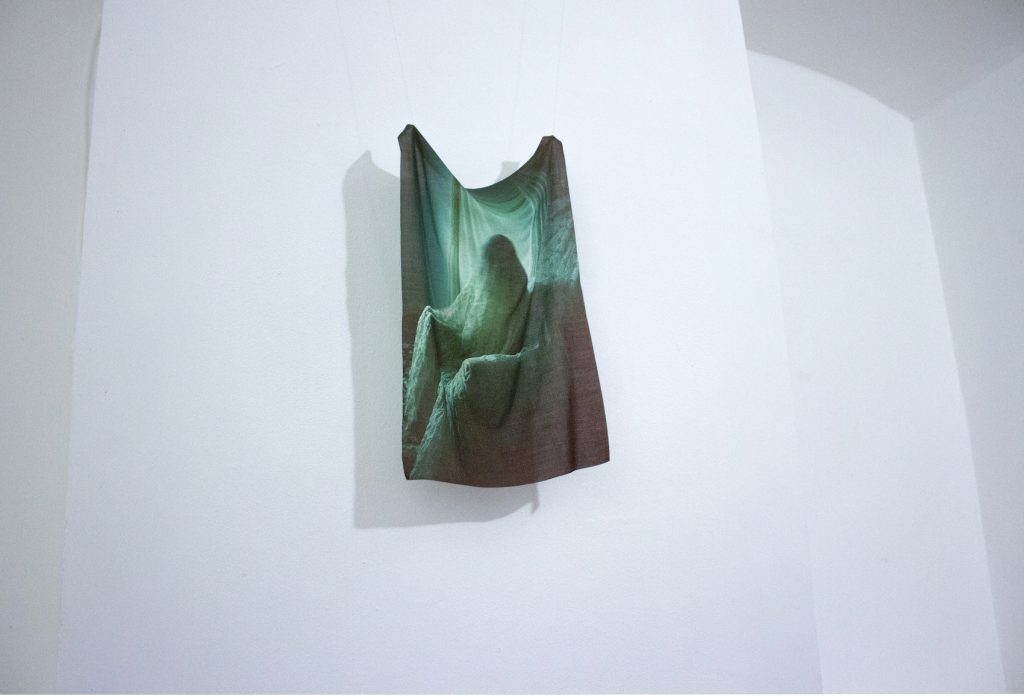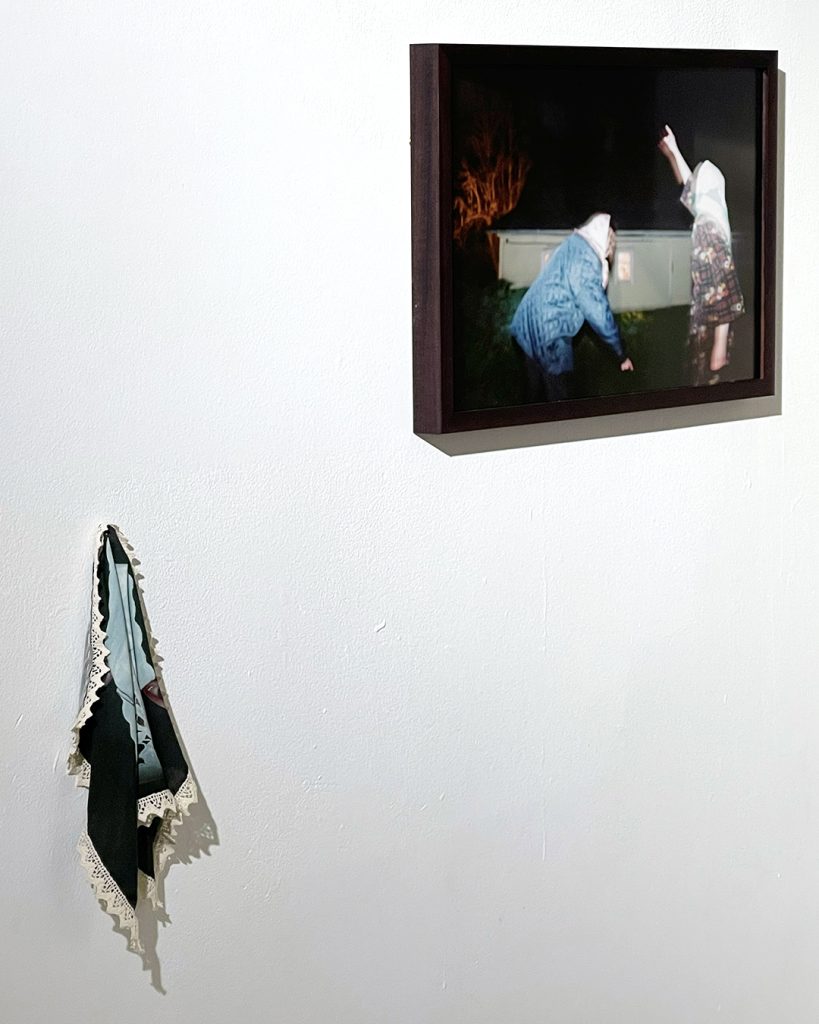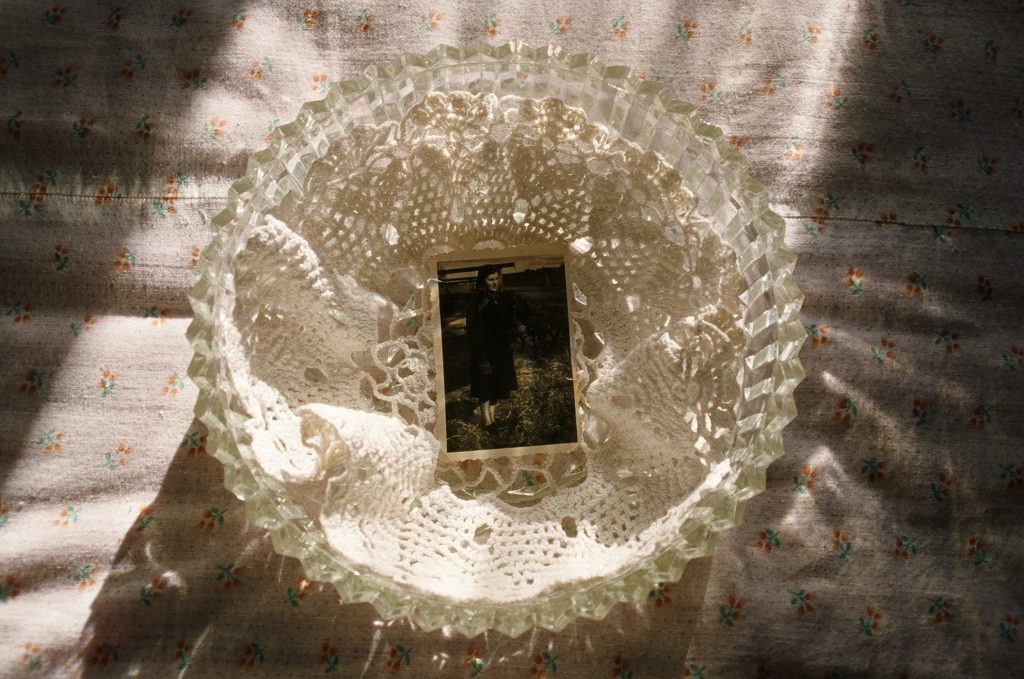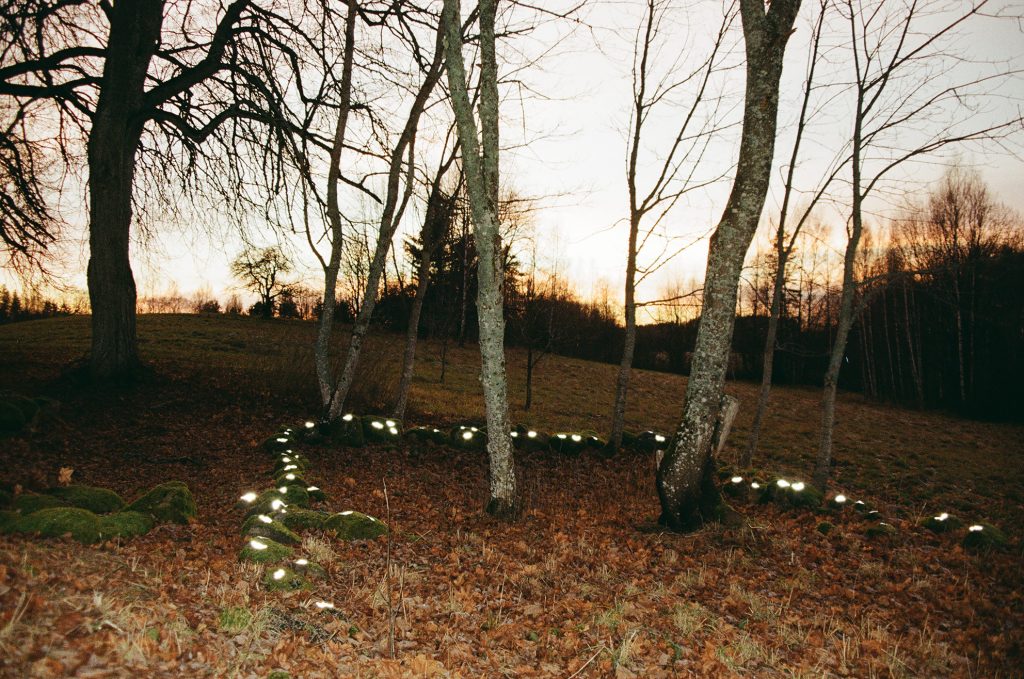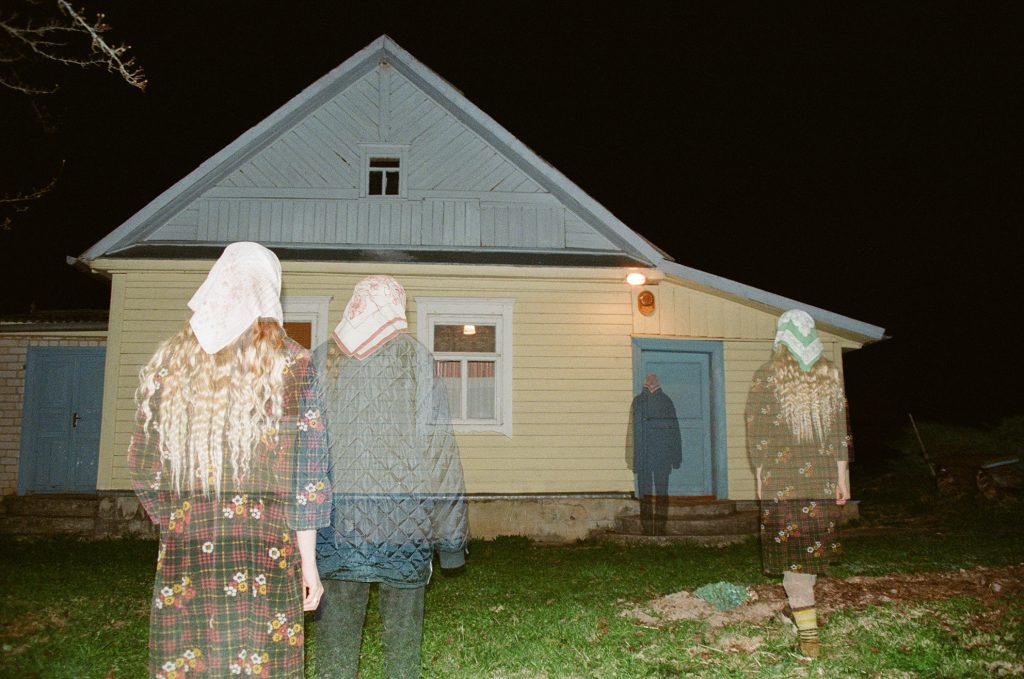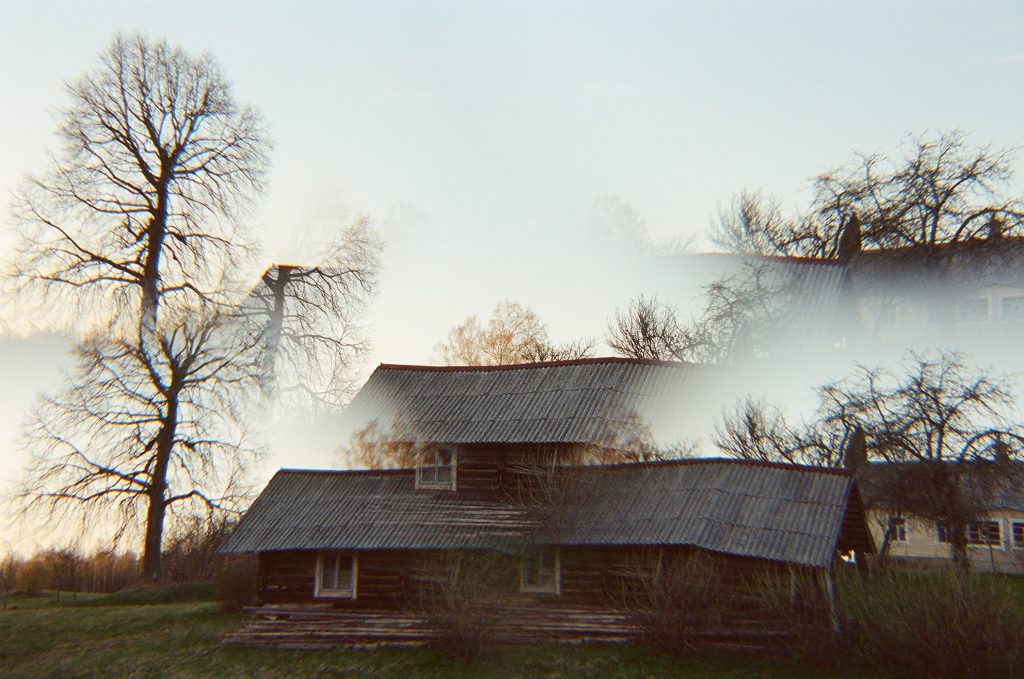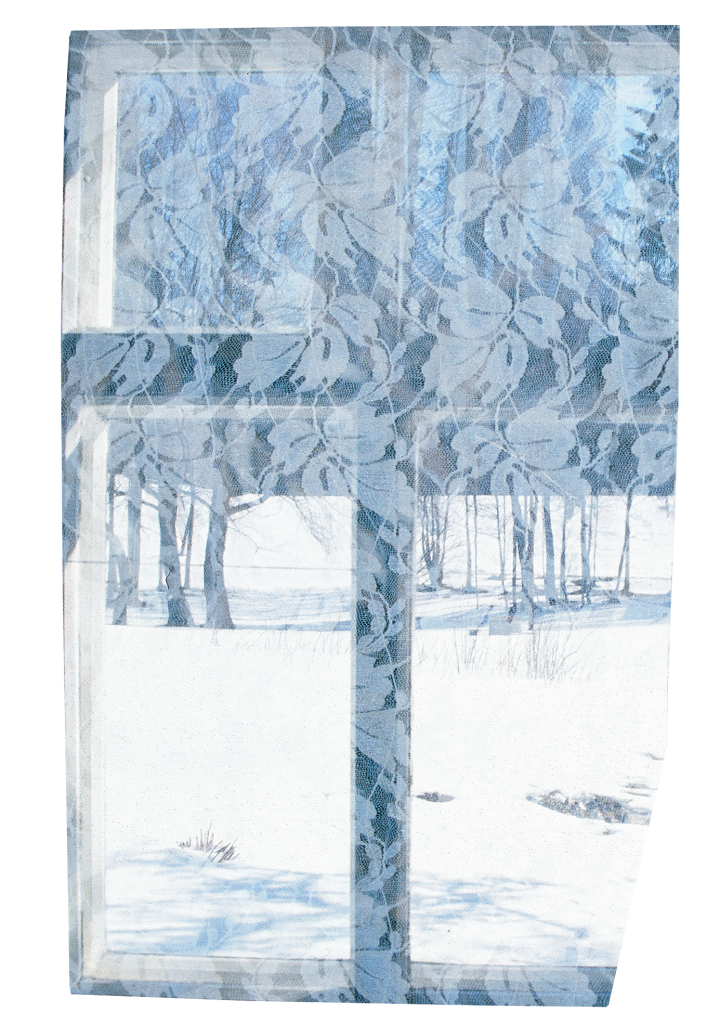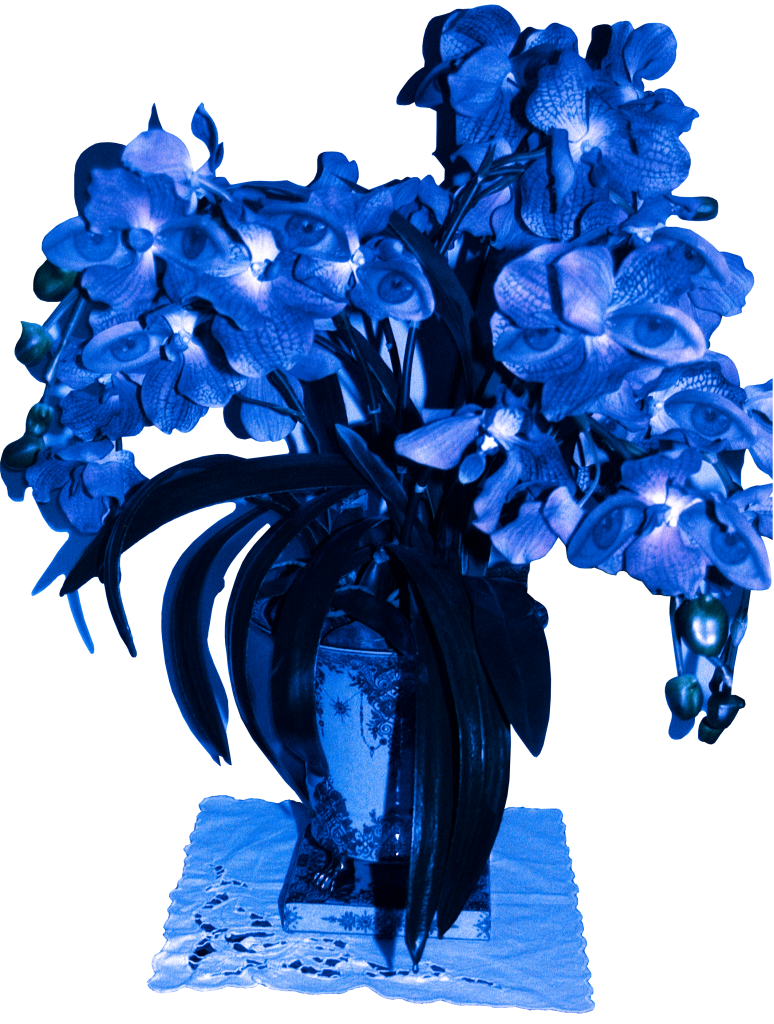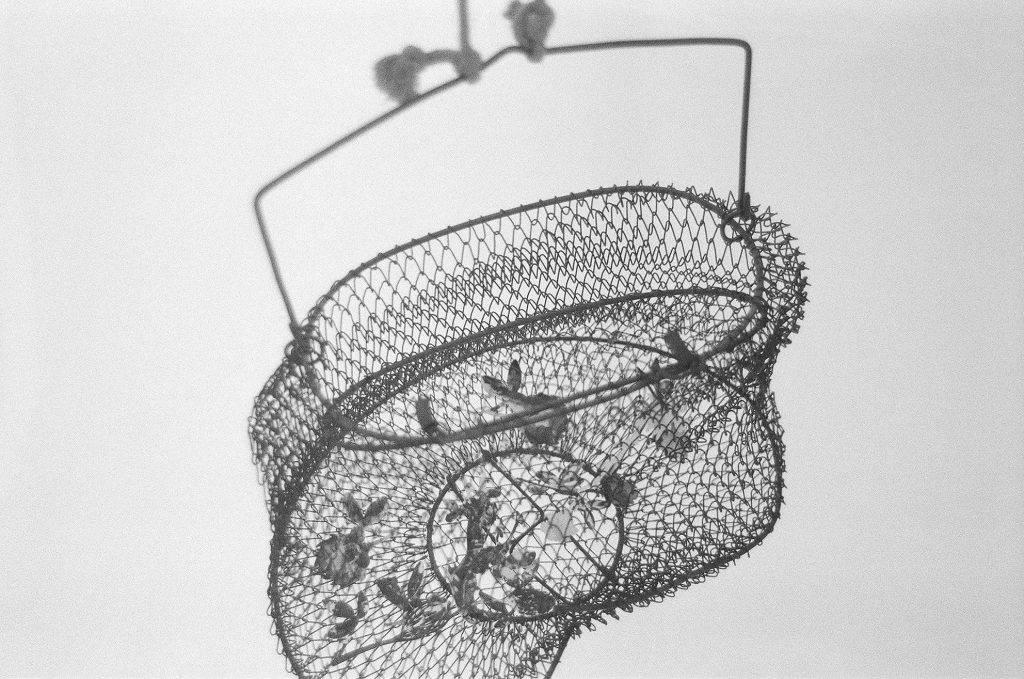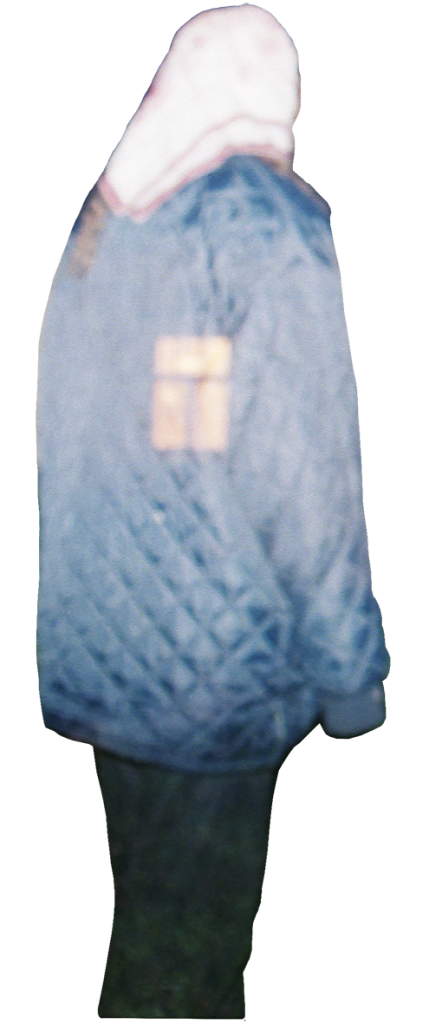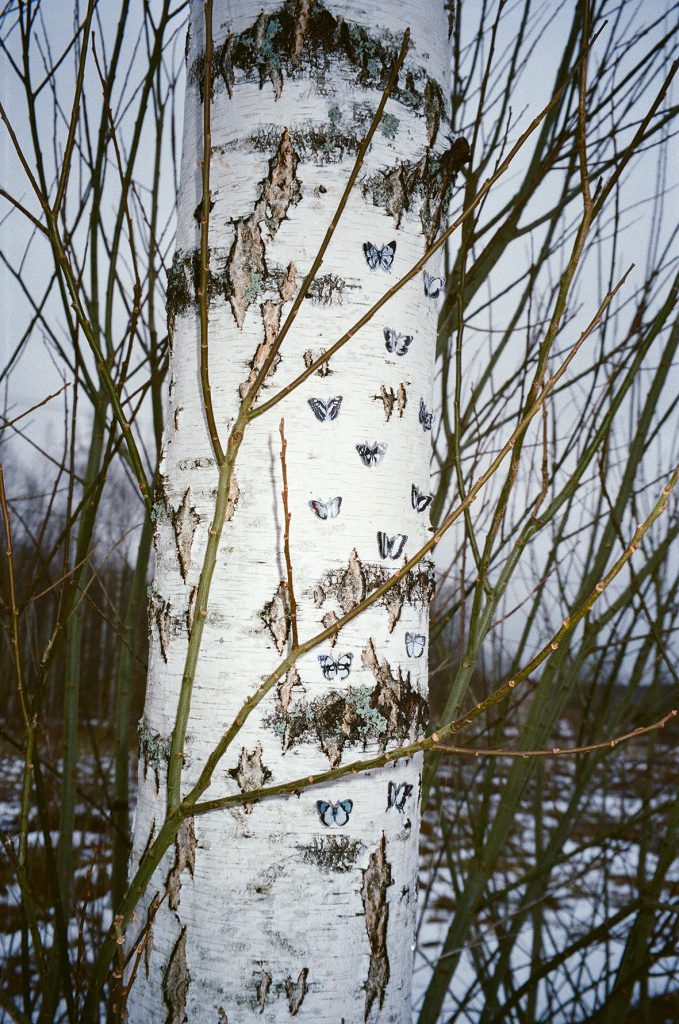Agate Tūna is a multidisciplinary artist from Riga, Latvia, working across photography, photographic installations, experimental video and sound art.
Her practice explores the relationship between spirituality and technology from a woman’s perspective. Taking a research-driven, web-like approach, she traces connections between her family's spiritualist heritage, hauntology, quartz crystals, and techno-specters while examining how historical narratives, personal experiences, and technological advancements shape our perception of the unseen.
Photography, as a "haunted medium," plays a central role in her work, preserving traces of the past while shaping imagined futures. Through analogue and experimental techniques such as chemigrams, she investigates the materiality of the photographic image. From self-portraits to staged compositions, her process is deeply hands-on, involving set construction, object-making, and direct engagement with physical materials.
b. 1996. lives and works in Riga, Latvia
EDUCATION
(May – July) Erasmus graduate + practice. Experimental photo festival. Barcelona, ESP
Art Academy of Latvia, Faculty of Visual Arts, interdisciplinary practise – POST (art in context), Master’s studies, Riga, LV
ISSP School, Developing Photo Language, Riga, LV
(Autumn semester) Erasmus+ studies Faculdade de Belas-Artes de Lisboa, PT
Art Academy of Latvia, Faculty of Visual Arts, Department of Painting, Bachelor’s studies, Riga, LV
SOLO EXHIBITIONS
Voltentity Gallery ASNI, Riga, LV
Curated by Auguste Petre
The Order of Invisible Things DOM gallery, Riga, LV
GROUP EXHIBITIONS
Neurons Desperately Seek Each Other. Riga Photography Biennial, Gallery Smilga, Riga, LV
Curated by Laima Daberte
Beyond Our Bodies Our Beings Extend. Gallery Pilot, Riga, LV
Curated by Nastia Svarevska
The Elevator Chats 2.0. Capa Contemporary Photography Center, Budapest, HU
Curated by Emese Musci
New Address: EDEN. Kim? Contemporary Art Centre, Hanzas 22, Riga, LV
Festival curators: Evita Goze, Žanete Liekīte, Zane Onckule
Contemporary Histories of Photography I, ISSP gallery, Riga, LV
Curated by Liāna Ivete Žilde
Dear figure, whom did you hang out with last night? Rothko museum, Daugavpils, LV
Curated by Inga Šteimane
Metahorror. Both Gallery, London. UK
Chasing the Devil to the Moon: Art Under Lunar Occupation Today Tallinn Art Hall, Tallinn, EST
Curated by Corina L. Apostol
Breaststroke, Backstroke and Butterfly Skolas street 18, Riga, LV
Language of Flowers Riga Photography Biennial, Gallery of the Artist’s Union of Latvia, Riga, LV
Curated by Inga Brūvere
Metonymy Dom gallery. Riga, LV
Curated by Artis Ostups
Metahorror meets Metahumour, In collabotarion with PlasticAfterLife (Kristians Aglonietis & Patrīcija Māra Vilsone) Lethaby Gallery, London, UK
Curated by Marc Halson and Kristaps Ancāns
Flora Fantastic: Eco-Critical Contemporary Botanical Art, in collaboration with Anna Malicka and Kristaps Ancāns, Apexart gallery. New York, USA
Curated by Corina Apostol and Tashima Thomas
Resonance, Cesis Concert hall, Cesis, LV
Curated by Inese Baranovska
AWARDS
Plat(t)form. Portfolio viewing. Fotomuseum Winterthur, CH
VKKF Creative Work Development Bursary, LV
Purvītis Prize 2025 / Nominee
Future Talent, Futures Photography platform, nominated by ISSP Gallery
1st prize BDO Young Artists Award Experimental Art Space PILOT, Riga, LV
RESIDENCY
Cité Internationale des Arts. Paris, France
